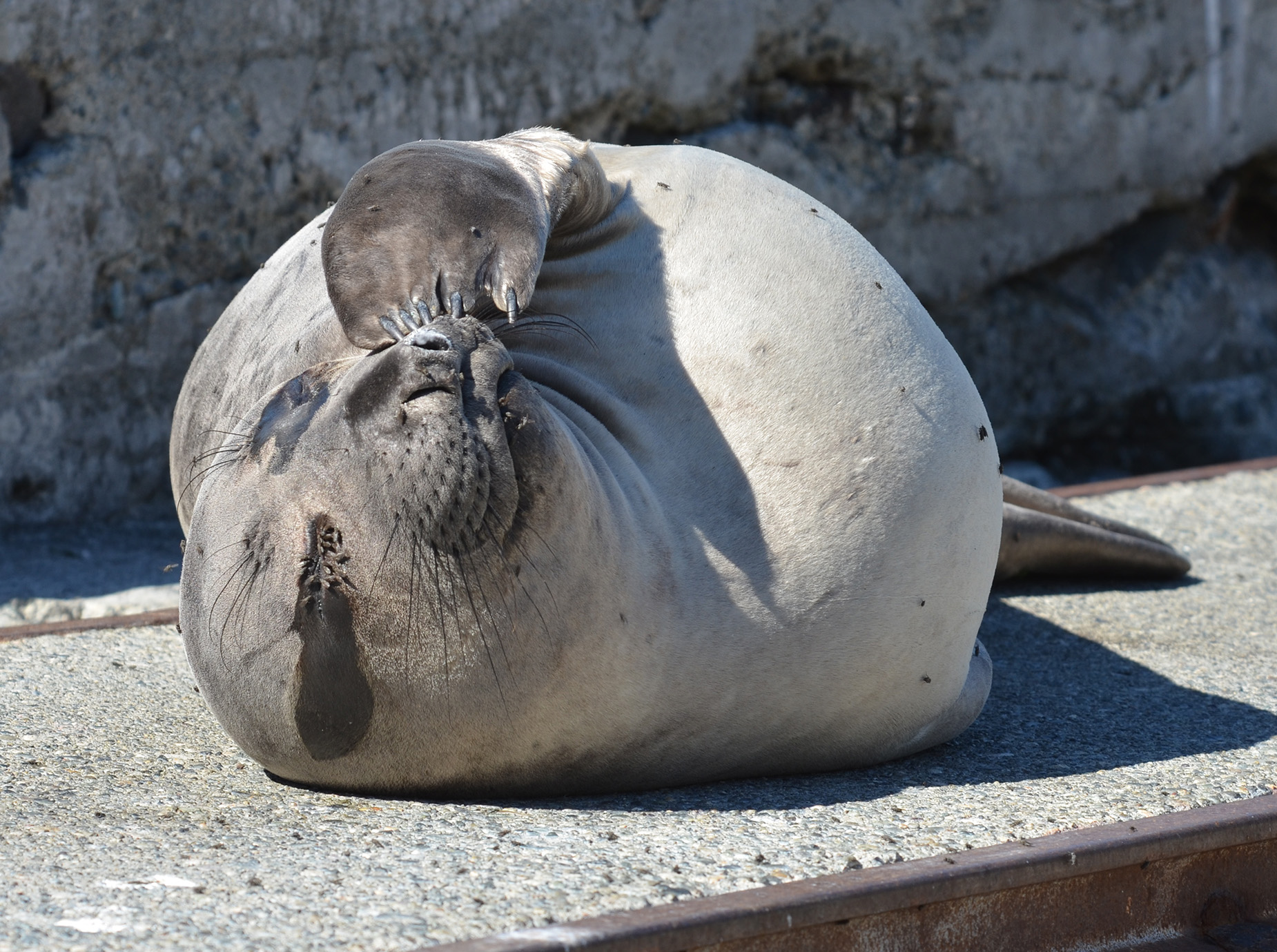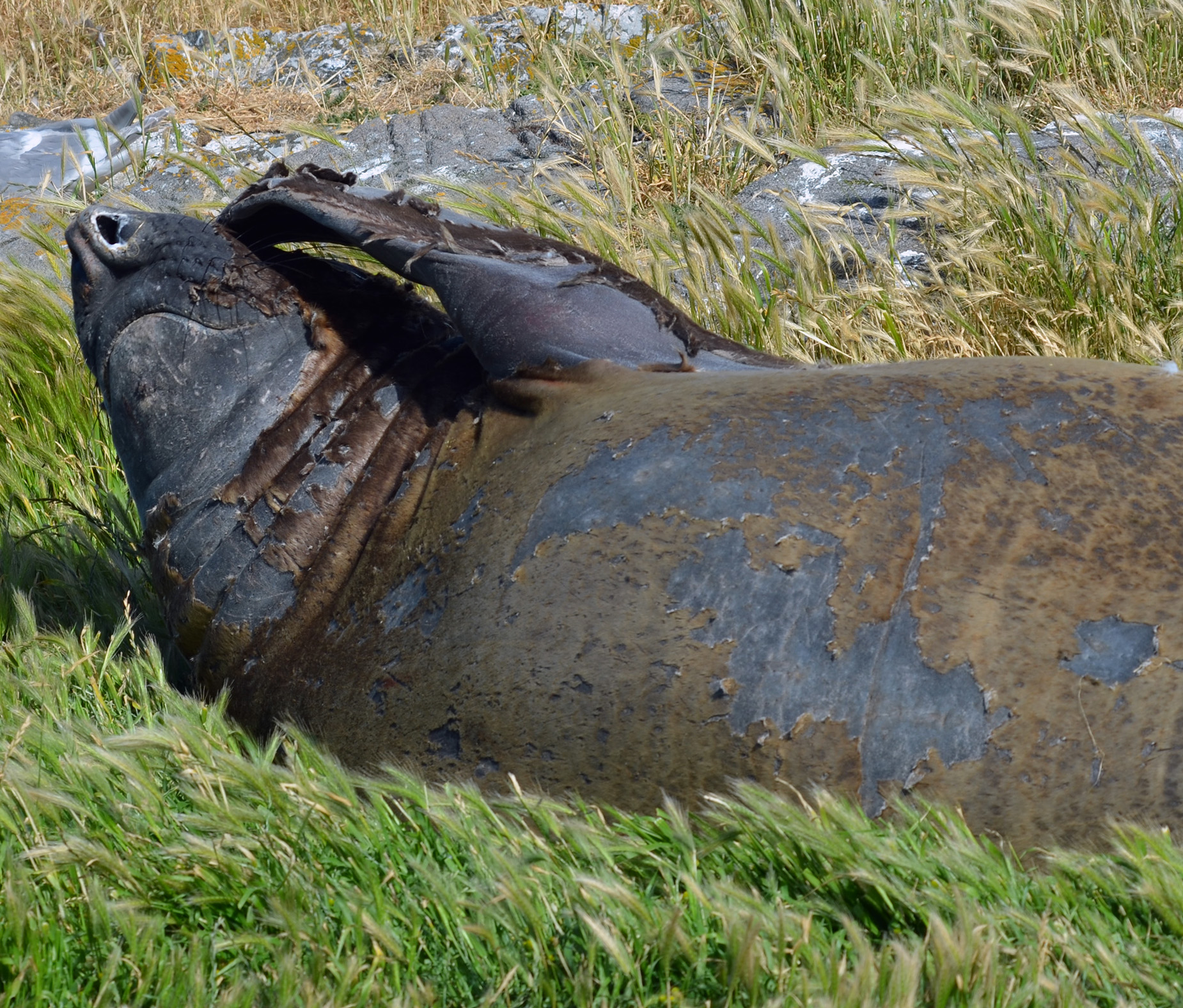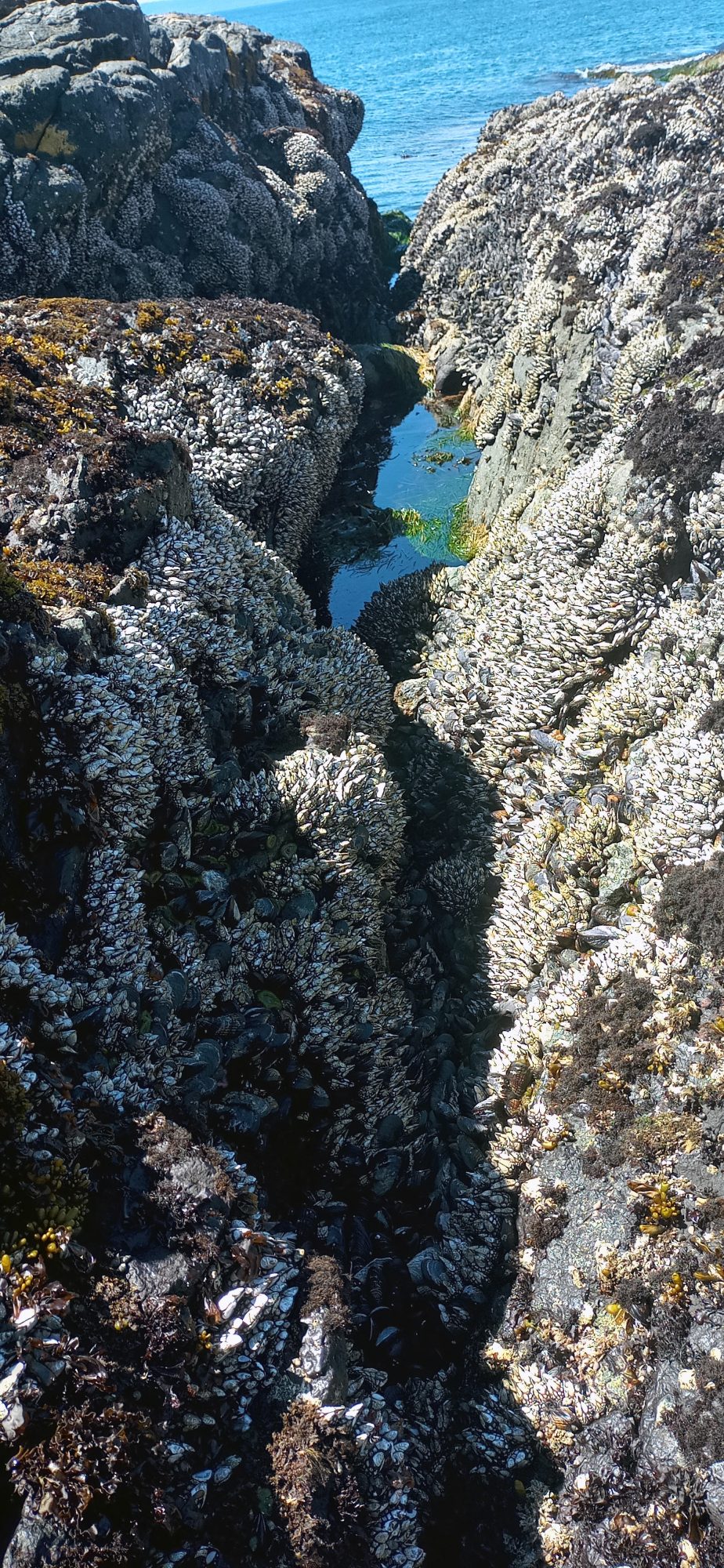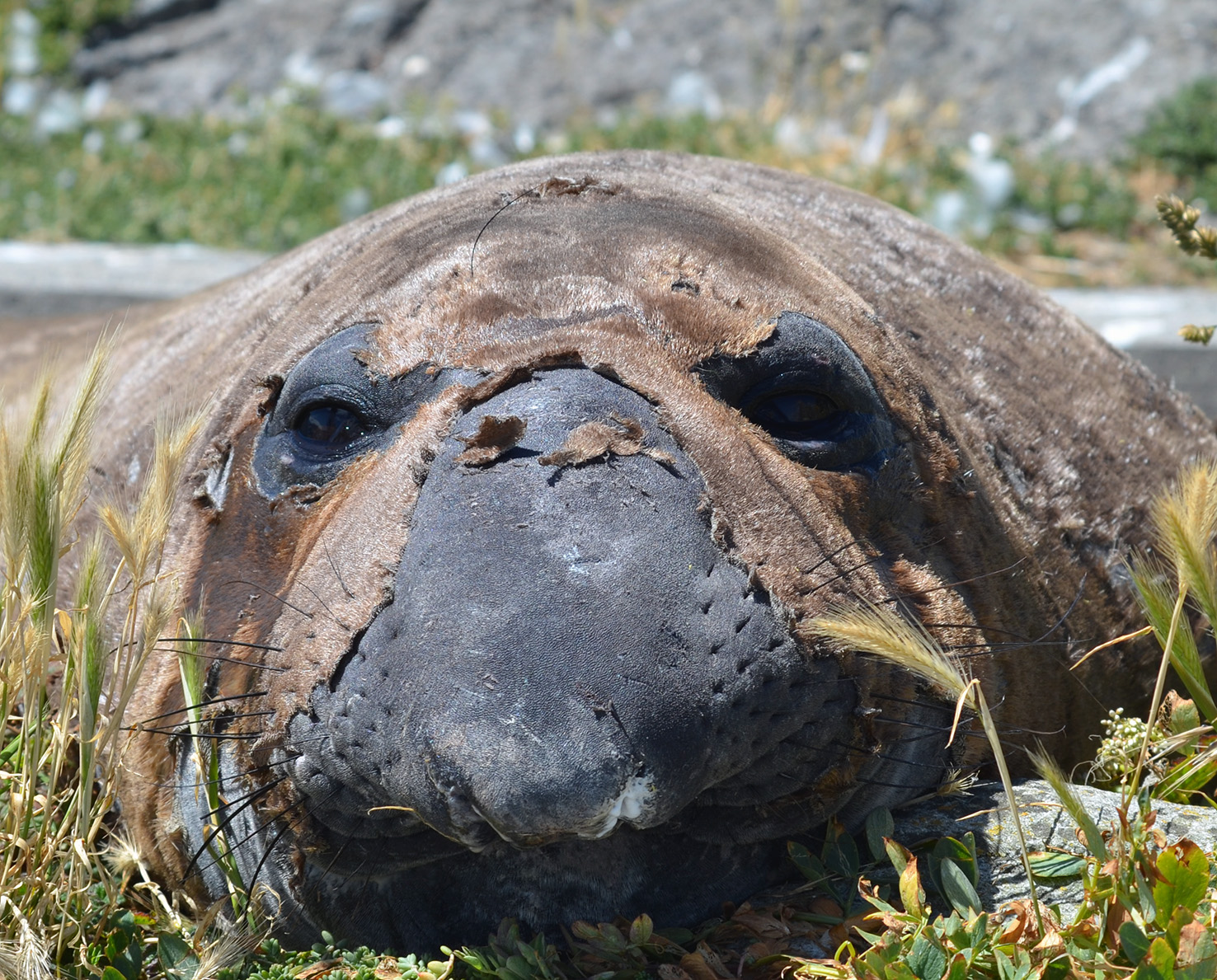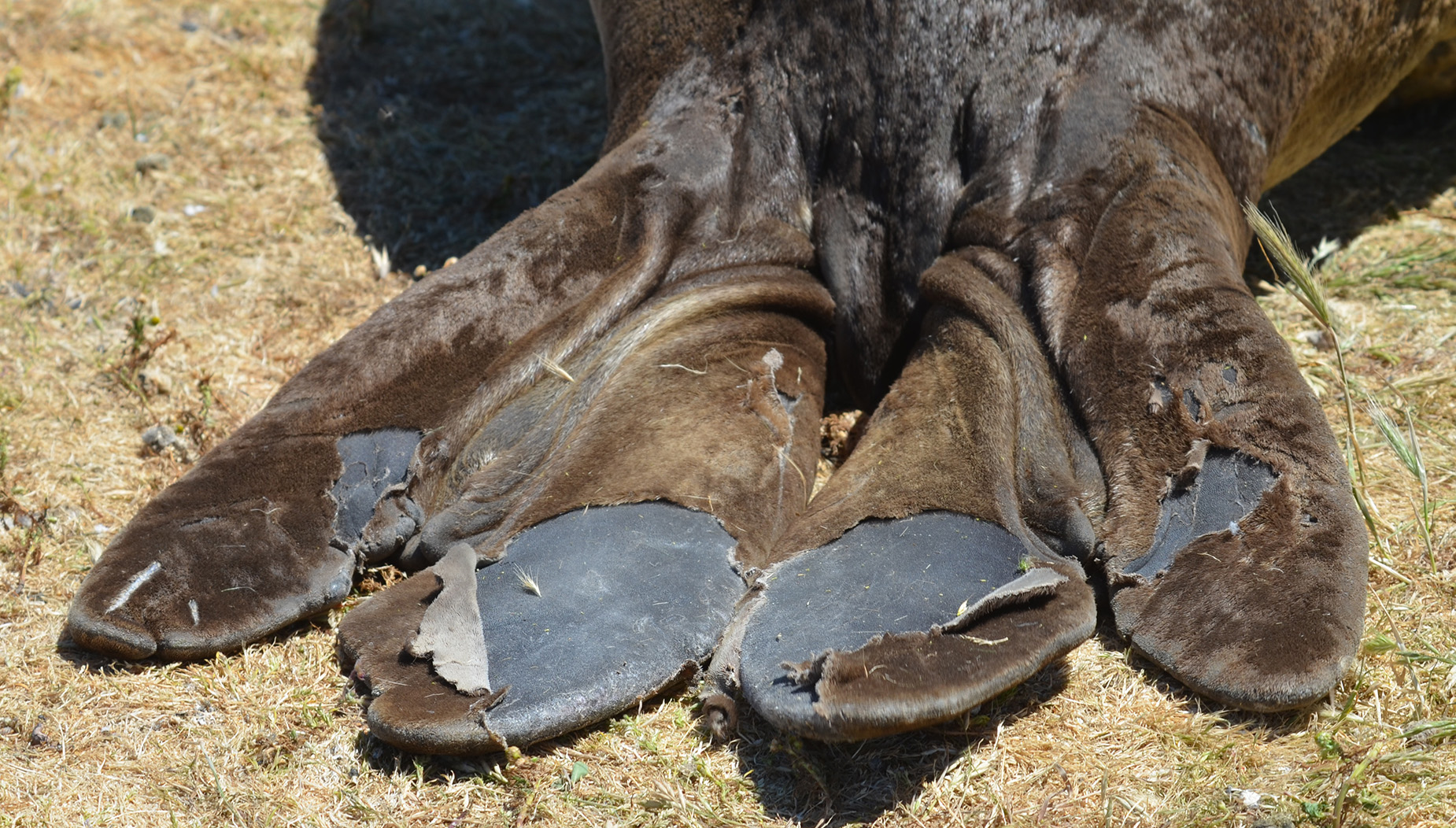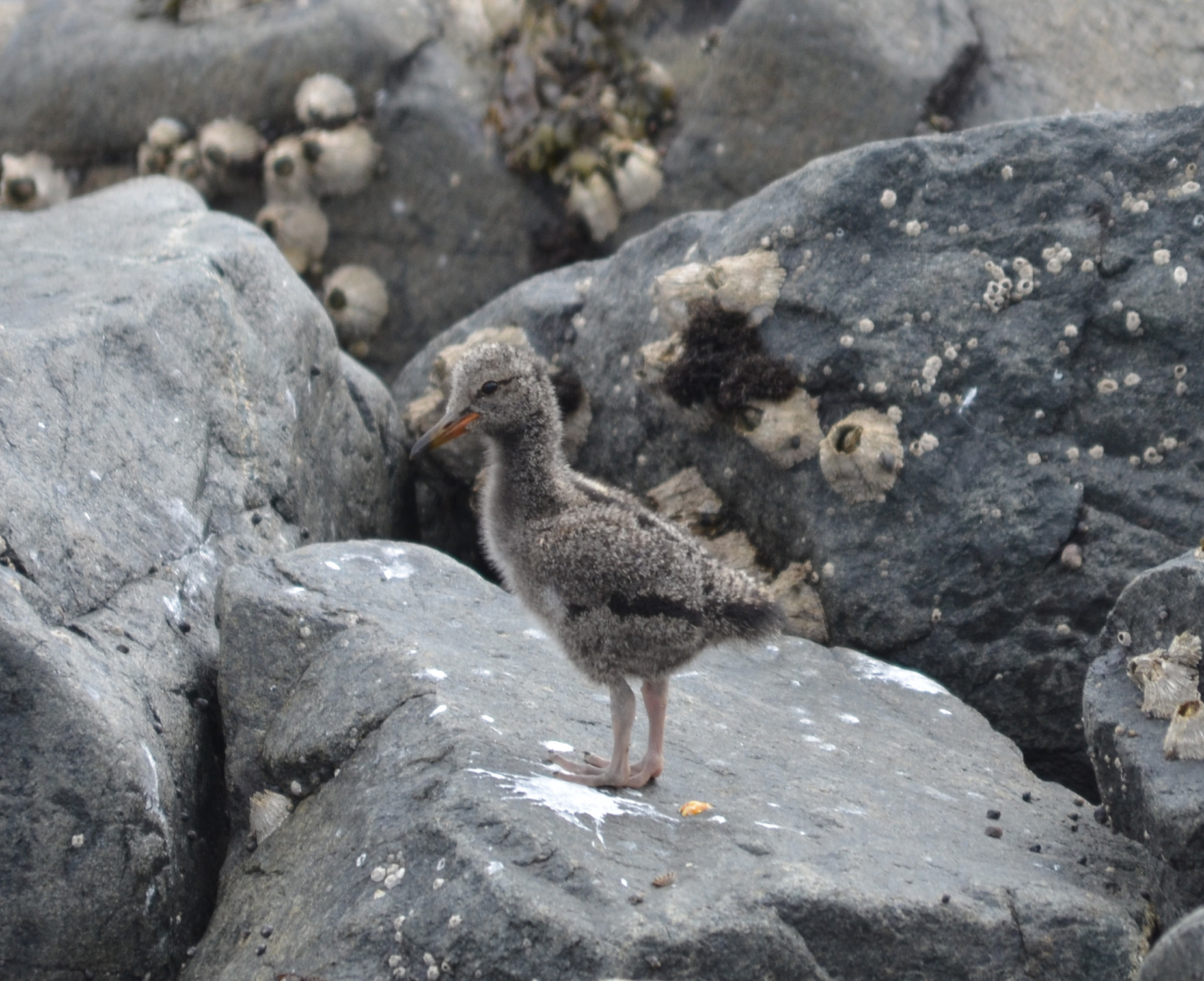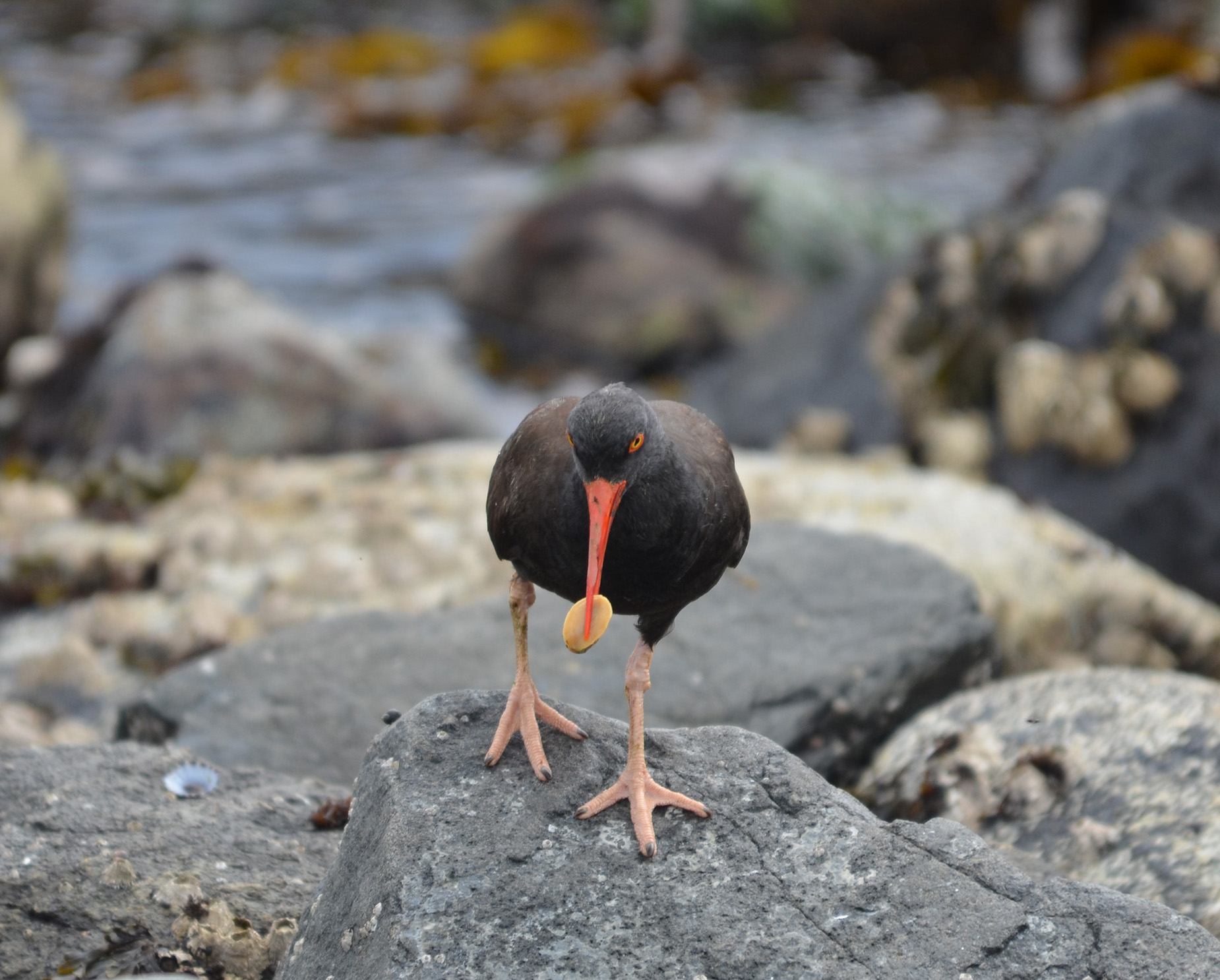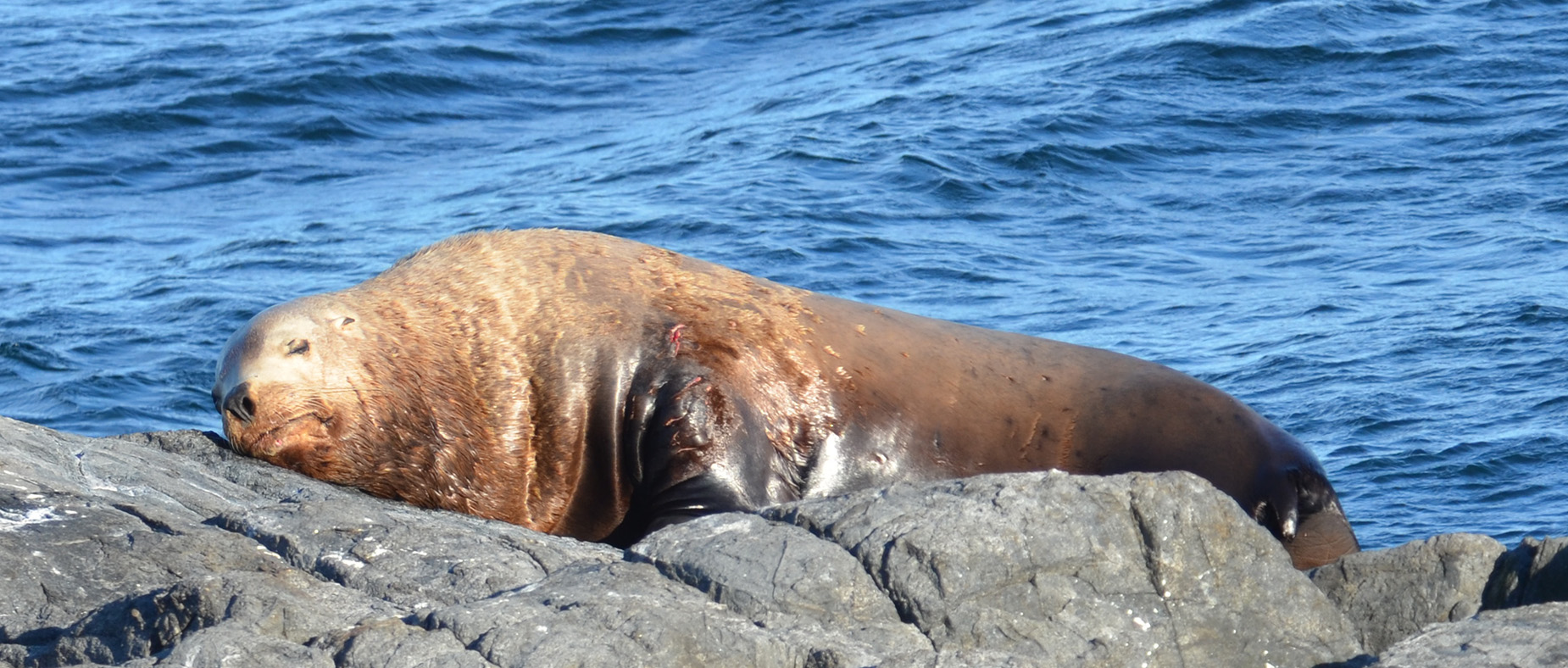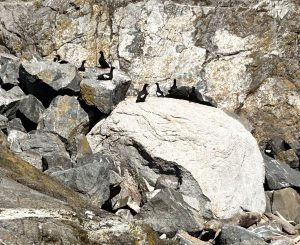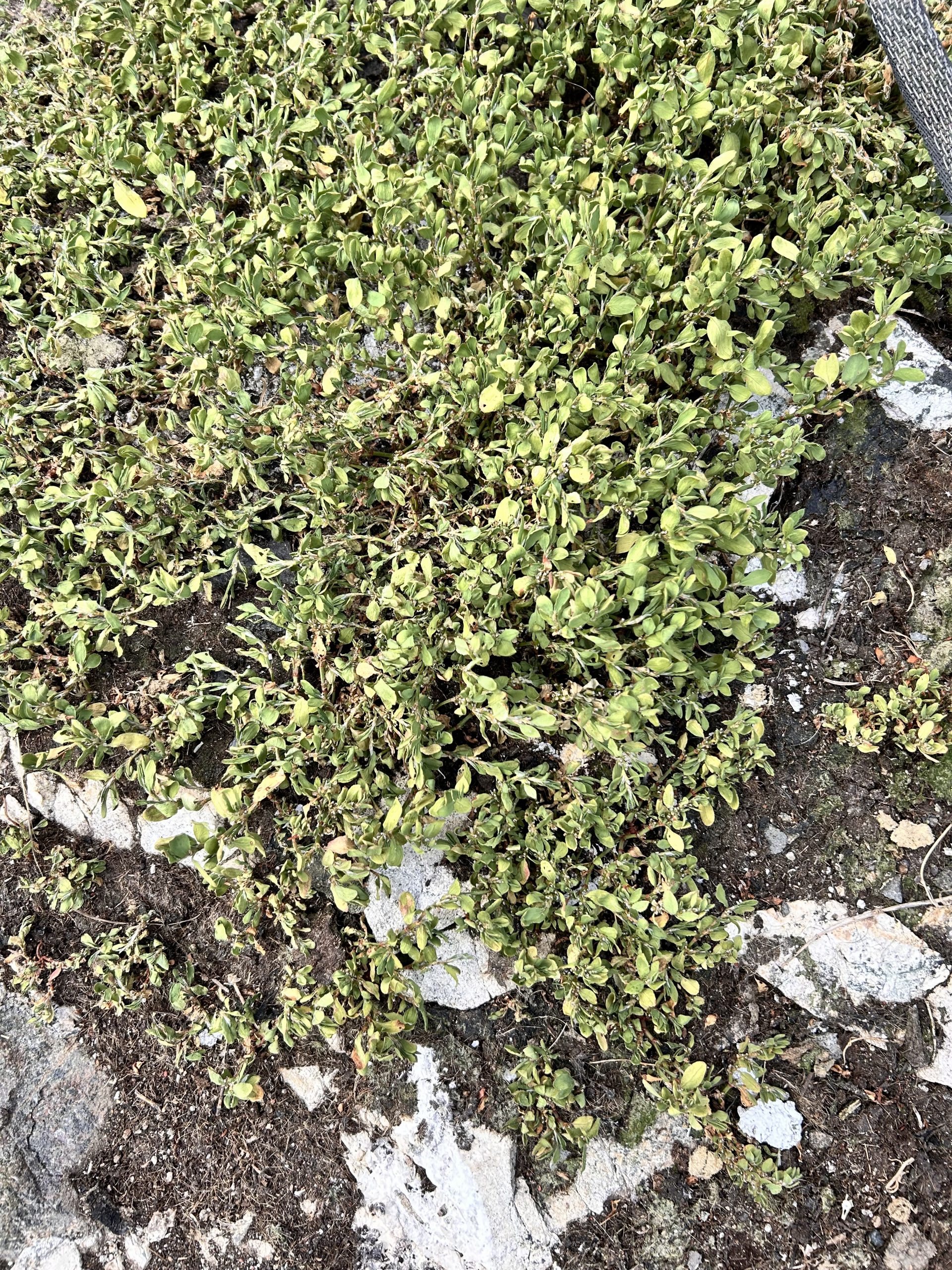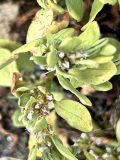Garry Fletcher, ER Warden for Race Rocks visited the reserve on June 14, 2024
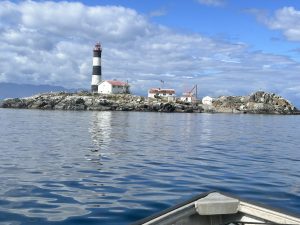 Greg Dickinson from Pearson College provided transport in Second Nature for the following group:
Greg Dickinson from Pearson College provided transport in Second Nature for the following group:
- Lisette and Mads – Mads is a former student and both are volunteering at Pearson College
- Garry Fletcher – Park Warden
- James Tuohy – future Ecoguardian
- Ann Nightingale and Andrew Jacobs – Rocky Point Bird Observatory
Upon docking I was struck by the number of Pigeon Guillemots on the rocks . Although I haven’t checked back in our records, there certainly seems to have been an increase in numbers
We were greeted by the new ecoguardian Christine Chourmouzis . In addition to having a general survey of the reserve, I was able to direct Christine and James through the process of entering them as editors on racerocks.ca and creating a log and posting it on the Race Rocks website.
 Supplies for the Ecoguardian are off-loaded
Supplies for the Ecoguardian are off-loaded
-
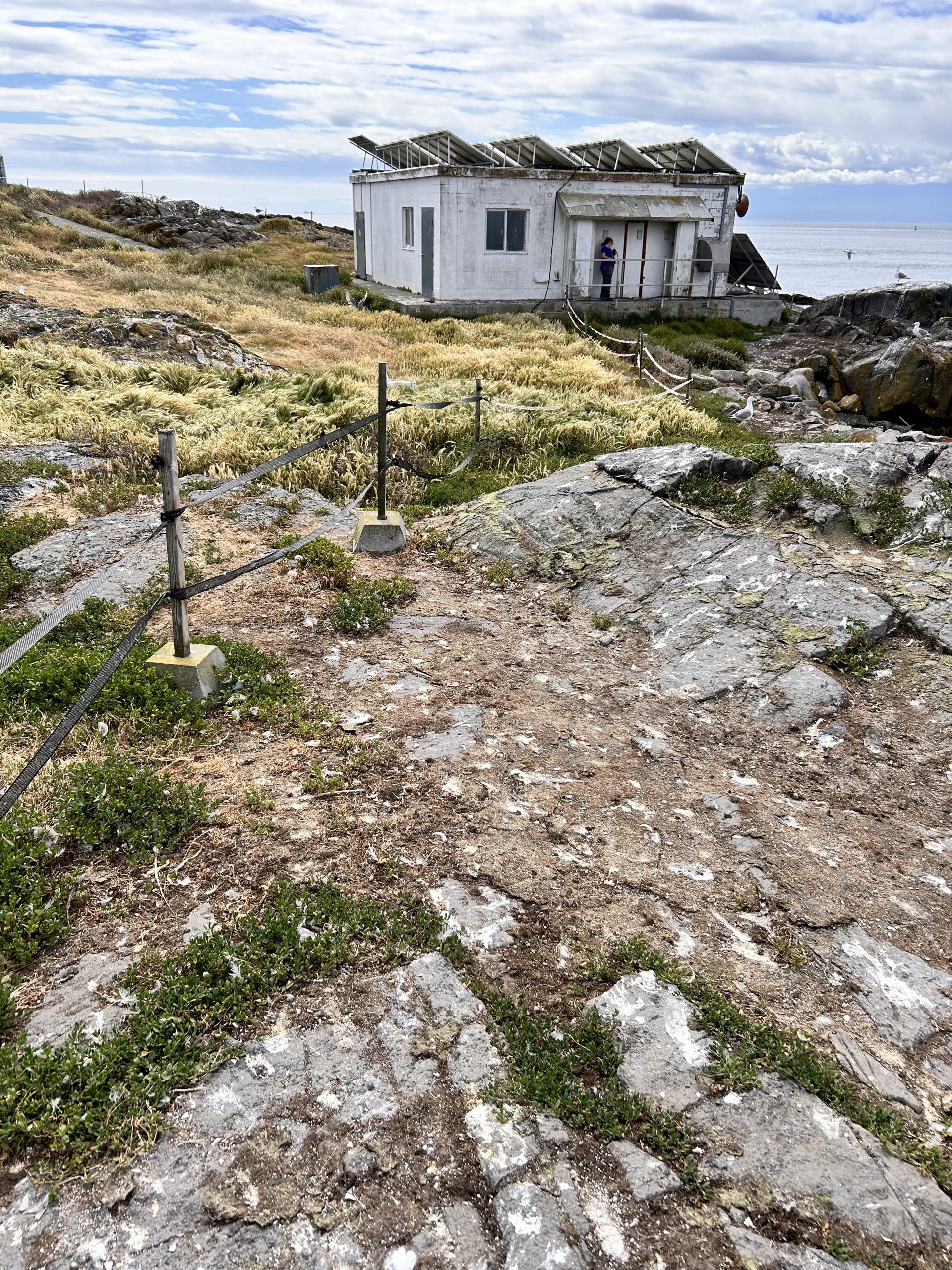
-
Sea lion fence
-
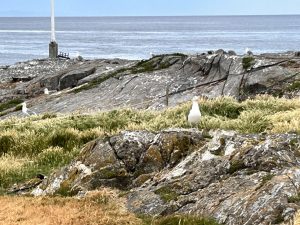
-
For several years now we have mainytained a sealion fence to keep the sealions out of the central island area where they can cause damage to infrastructure . This year, I submitted an application to BC Parks for funding to pay for installation of a permanent fenceline as the temporary posts are often pushed over by the sealions when they accumulate in the fall in massive numbers on the archipelago of islands
-
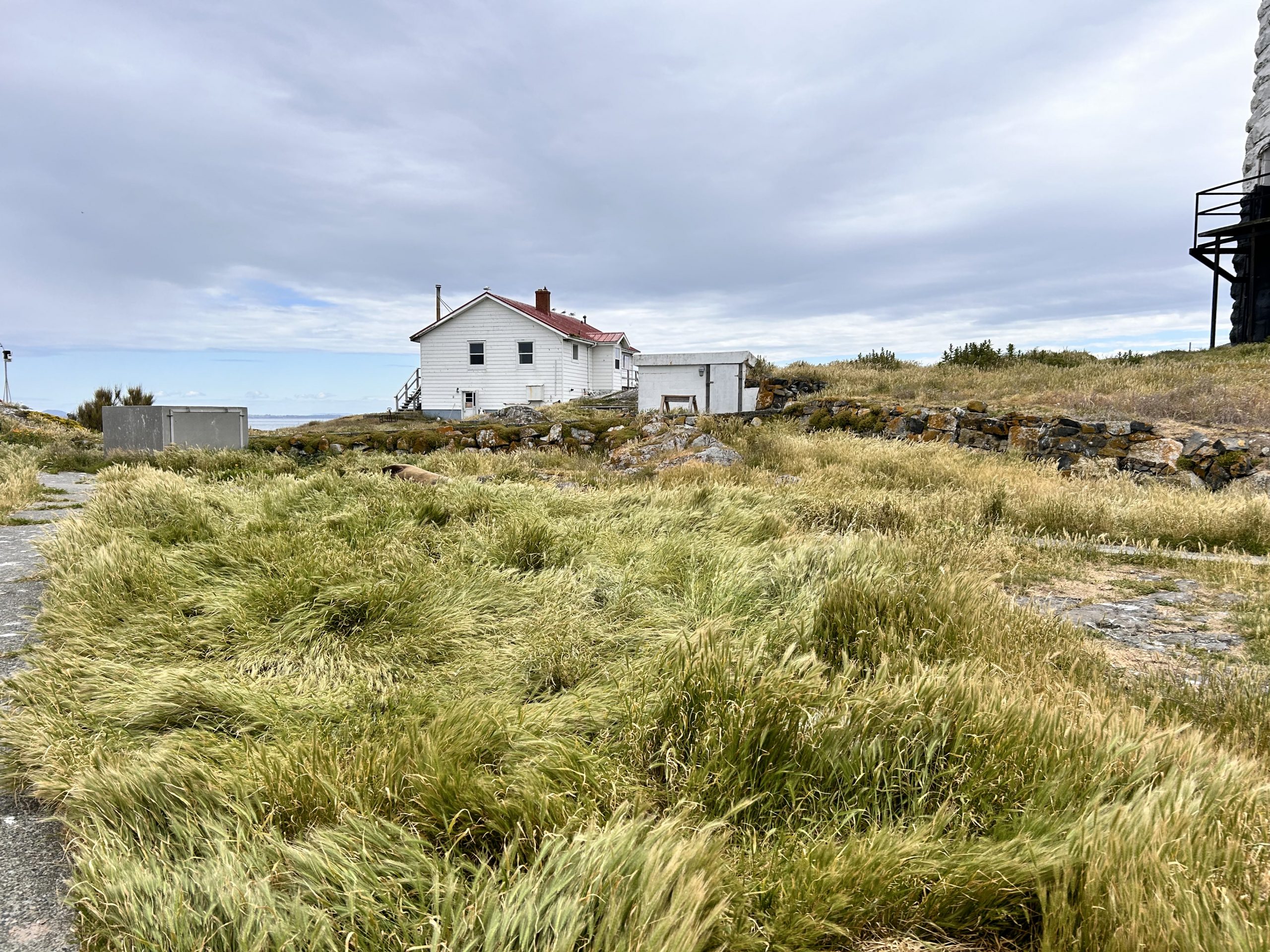
-
This year there has been an invasion of the grass foxtail over much of the island
-
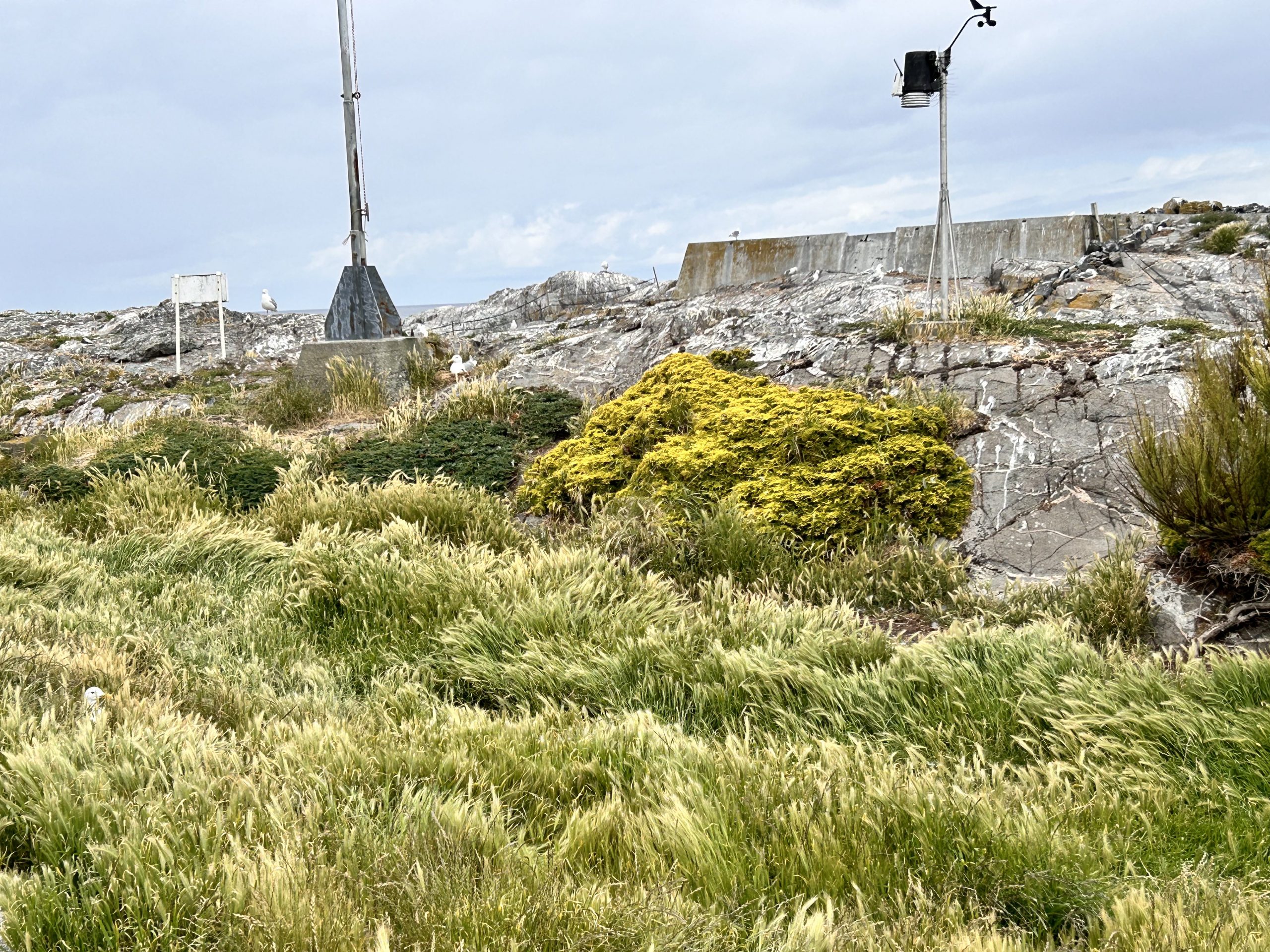
-
It has almost totally replaced the pineapple weed which has been abundant in previous years
-
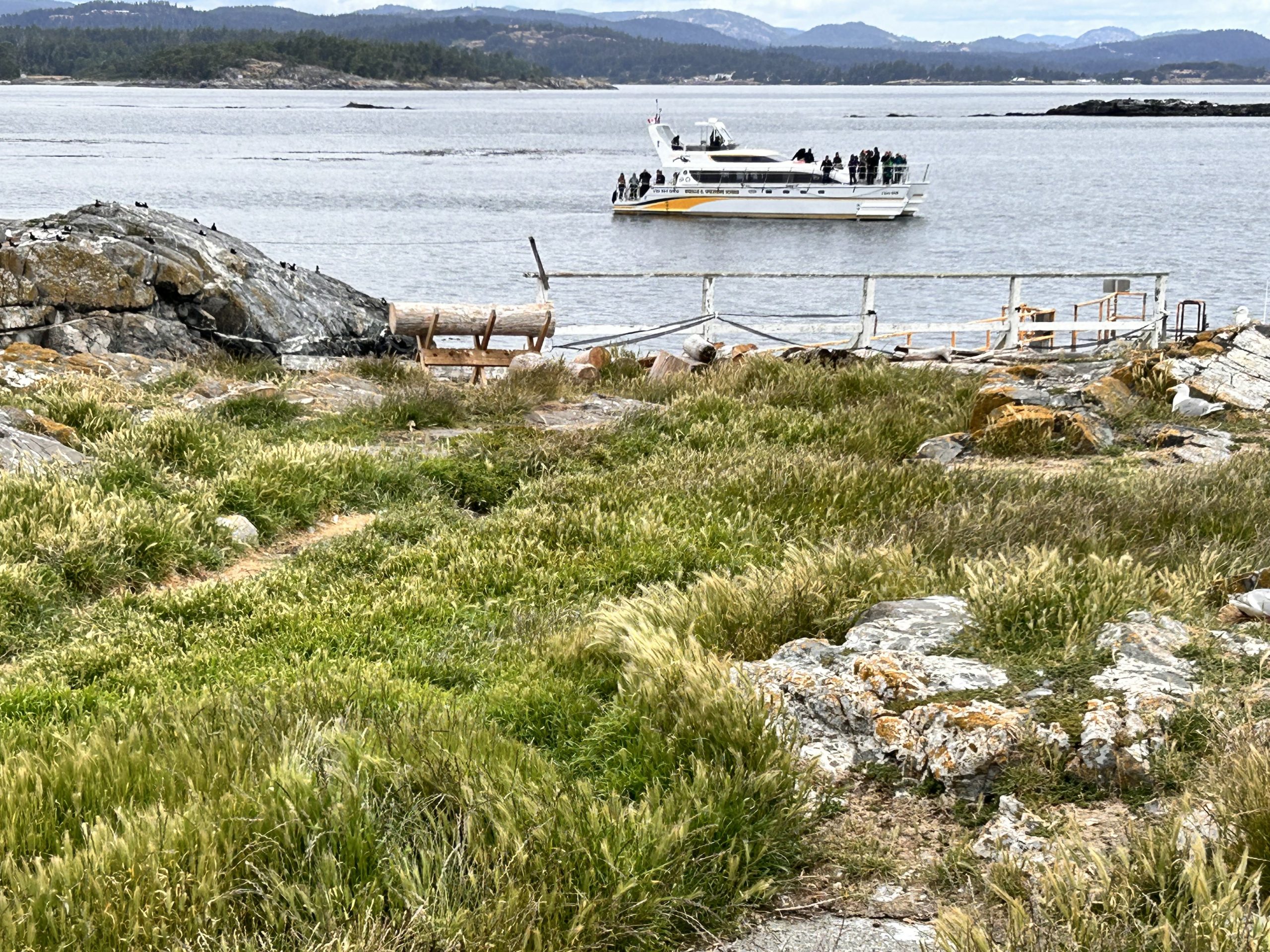
-
one of the many Ecotourism boats passes through the channel North of the docks
-
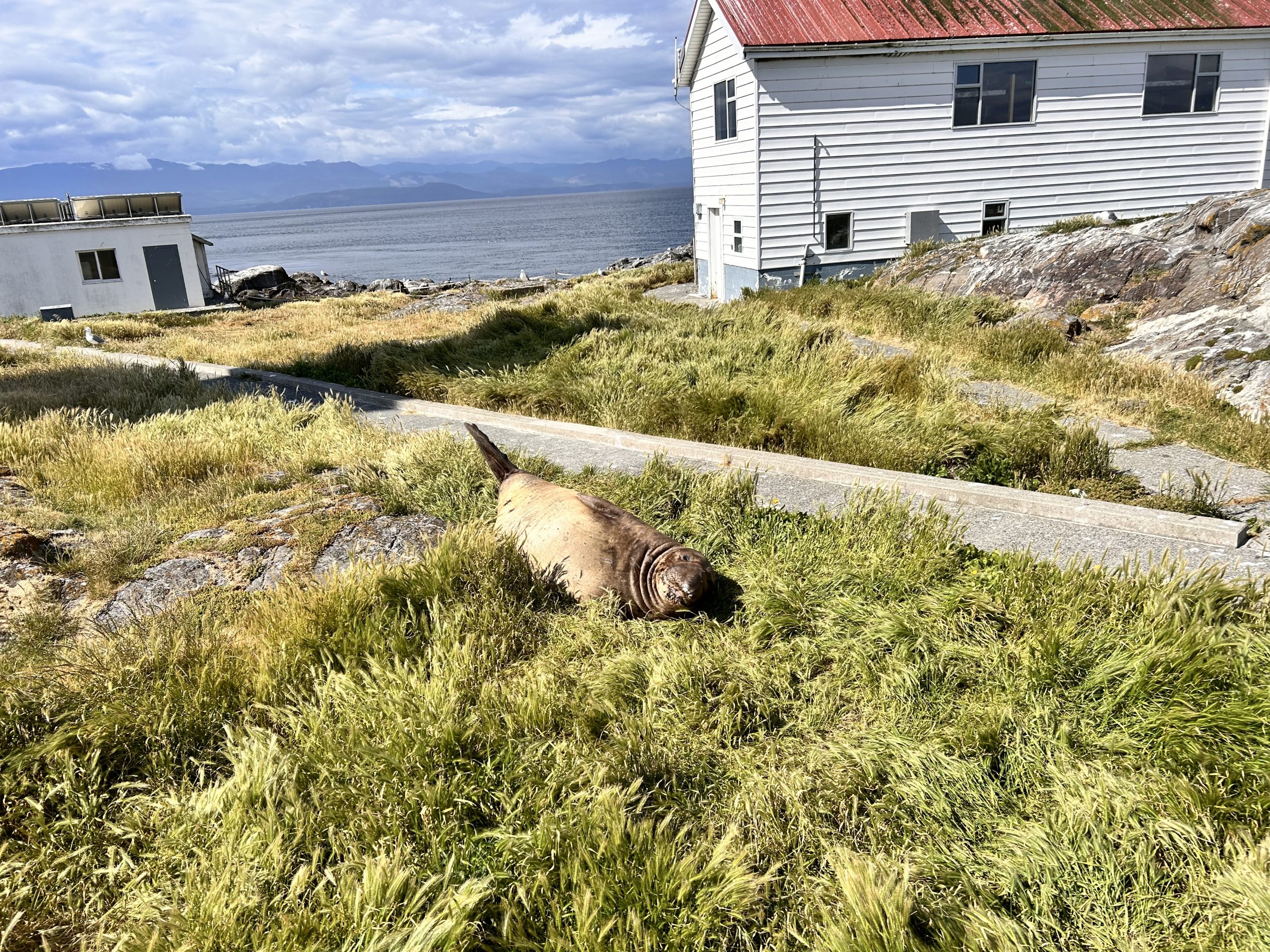

Pigeon Guillemots also nest on the island
-
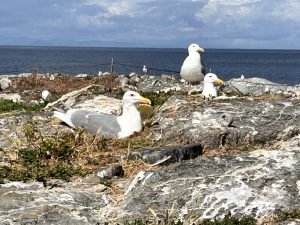
-
James and Ann documented nests and locations on the island
-
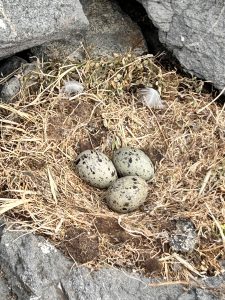
-
Most nests have some eggs
-
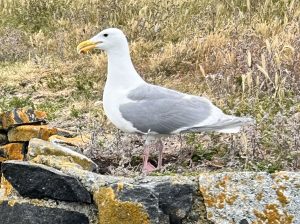
-
The Glaucous-winged gull
-
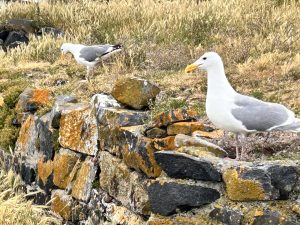
-
Glaucous winged and the western xglaucous -winged hybrid
-
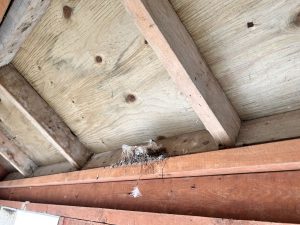
-
a barn swallows nest has appeared although there were no birds in sight
-
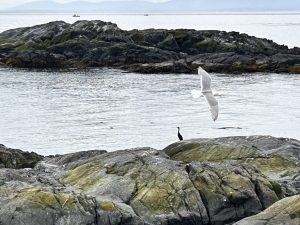
-
A lone cormorant on the south side of great Race Island
-

-
Ann Nightingale came out to do a proper survey of the Gull population with Andrew Jacobs of the Rocky Point Bird Observatory
-
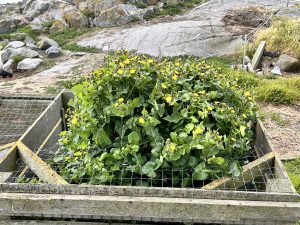
-
Various invasive polants grow in the compost bin

When I was teaching at Pearson College, we often monitored a set of tidepools out on the island’s West side. I checked out those pools again and took photos which show the state of algae growth. Some observations in the tidepool files provide a baseline for comparative studies in the future. These files are on the tidepools
Today’s observations are in the set of photos below
-
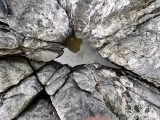
-
Tidelpool#1
-
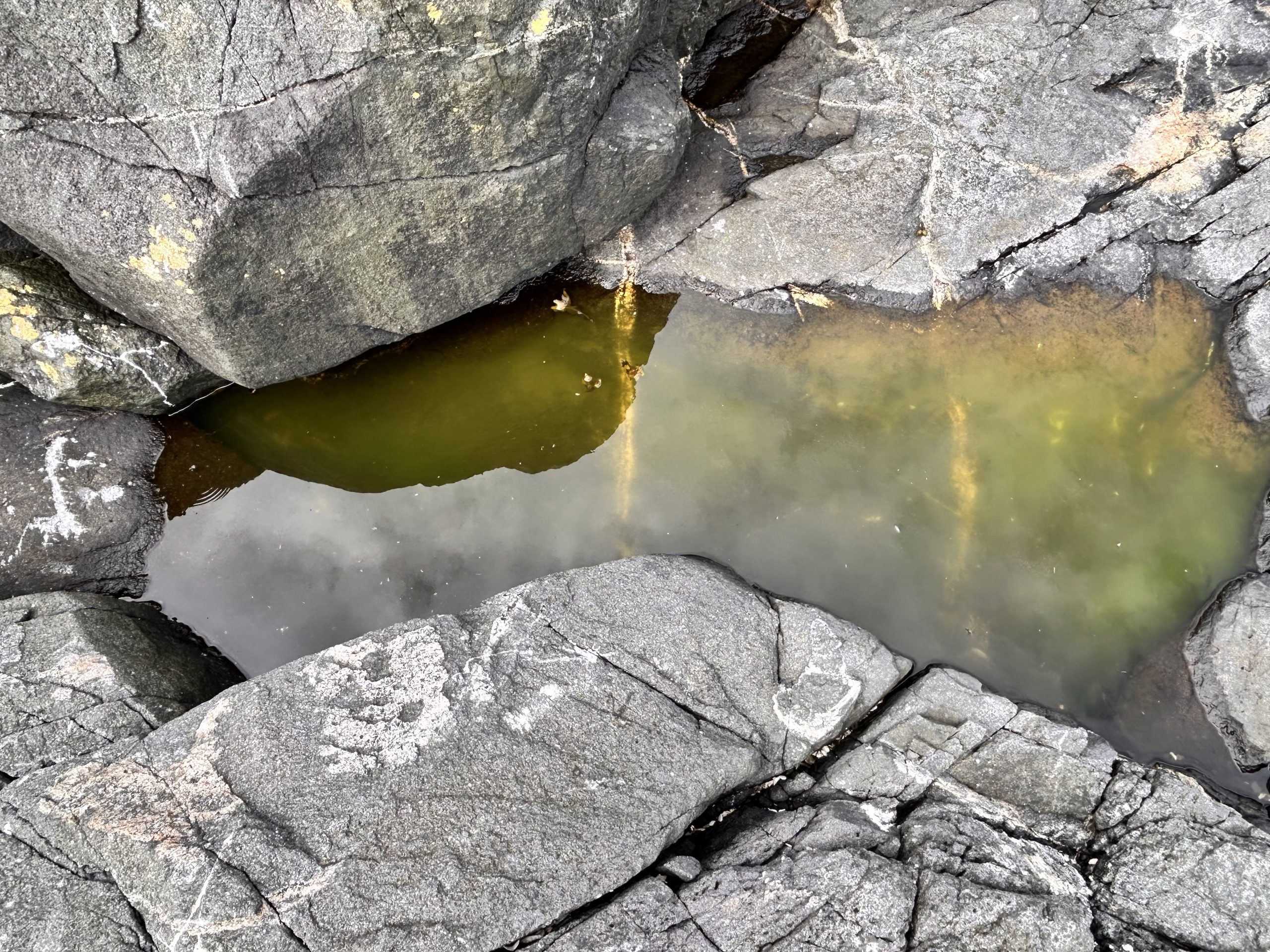
-
tidelpool#2
-
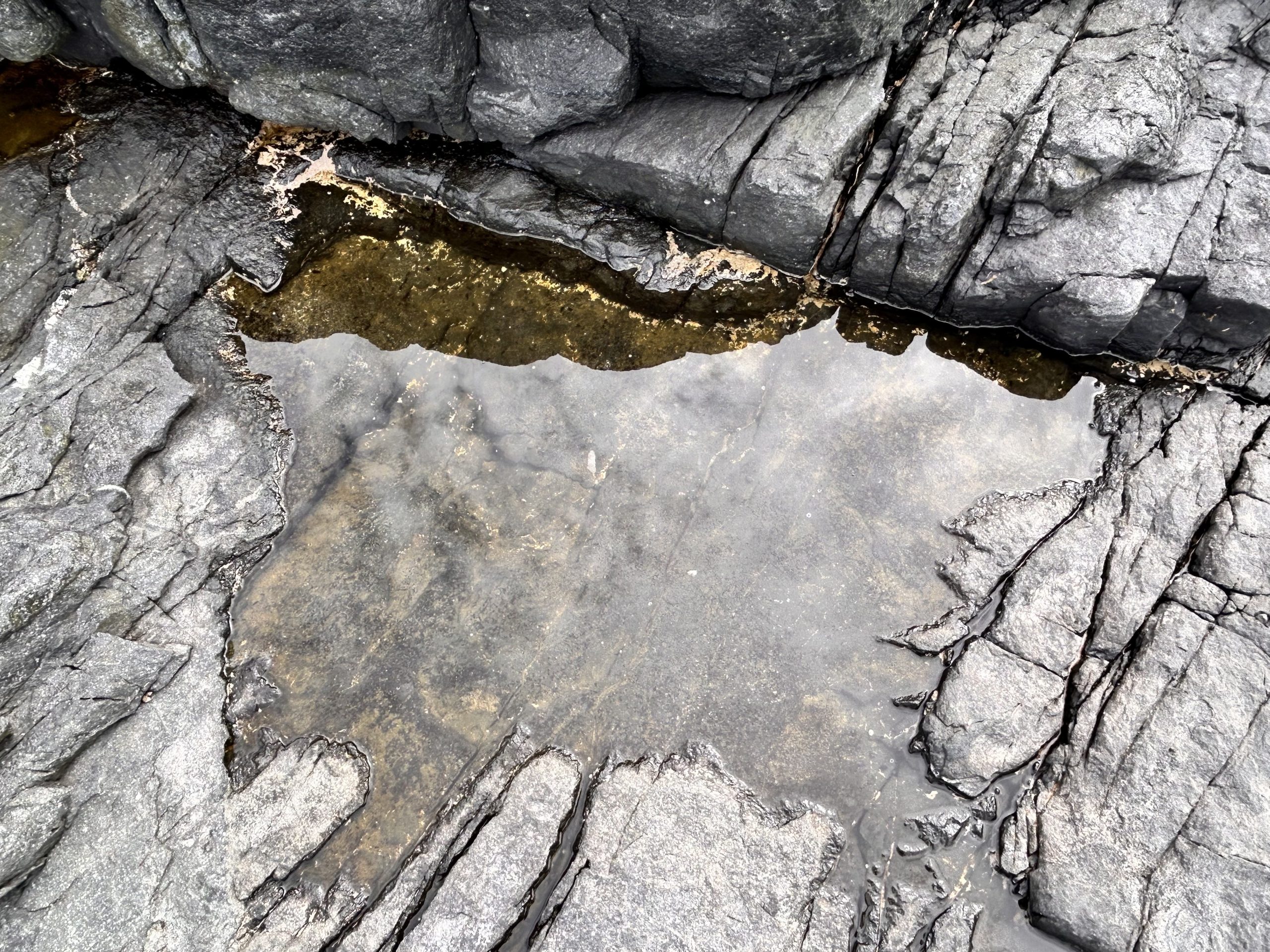
-
tidelpool#3
-
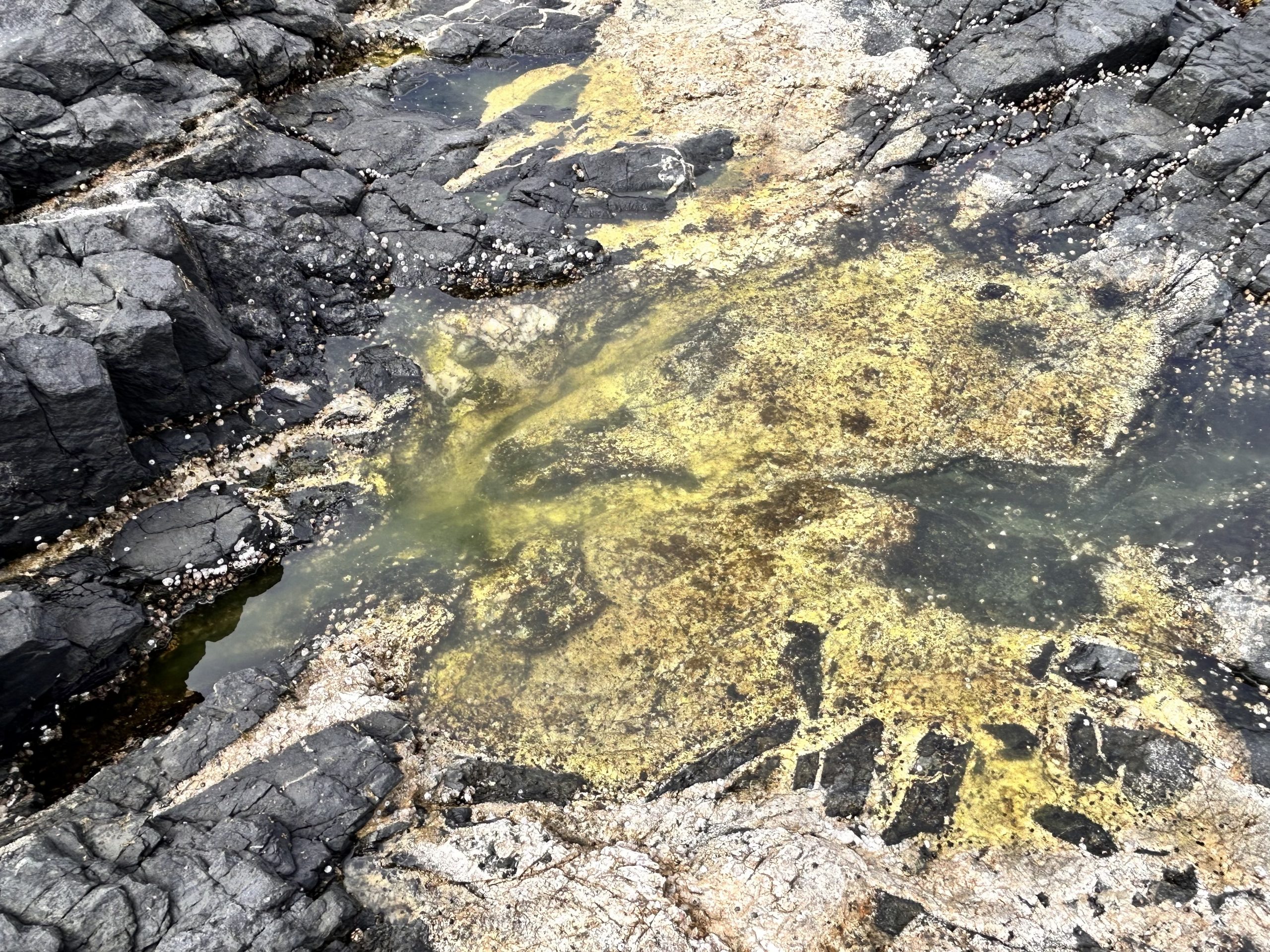
-
tidelpool#4
-
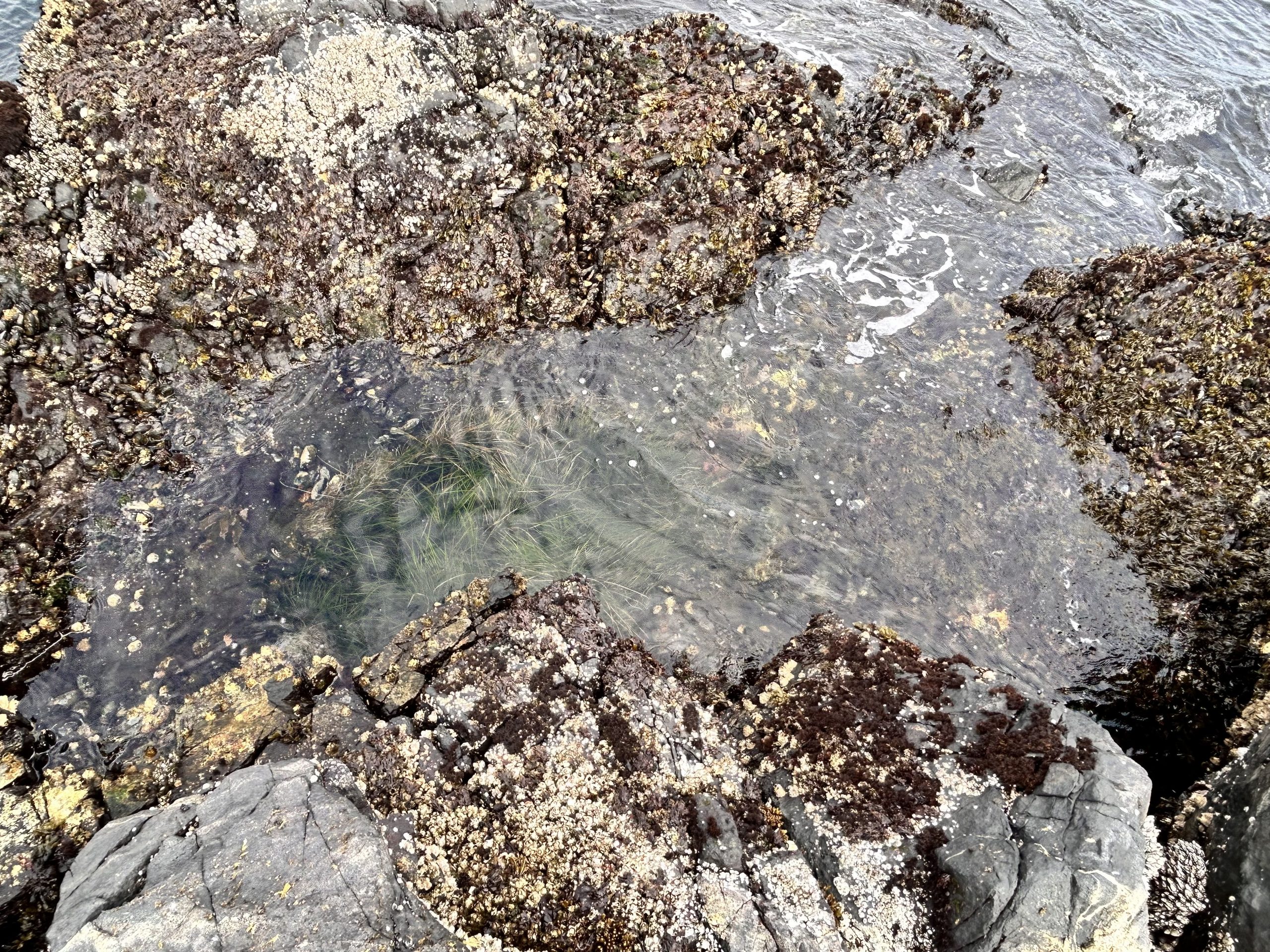
-
tidelpool#5
-
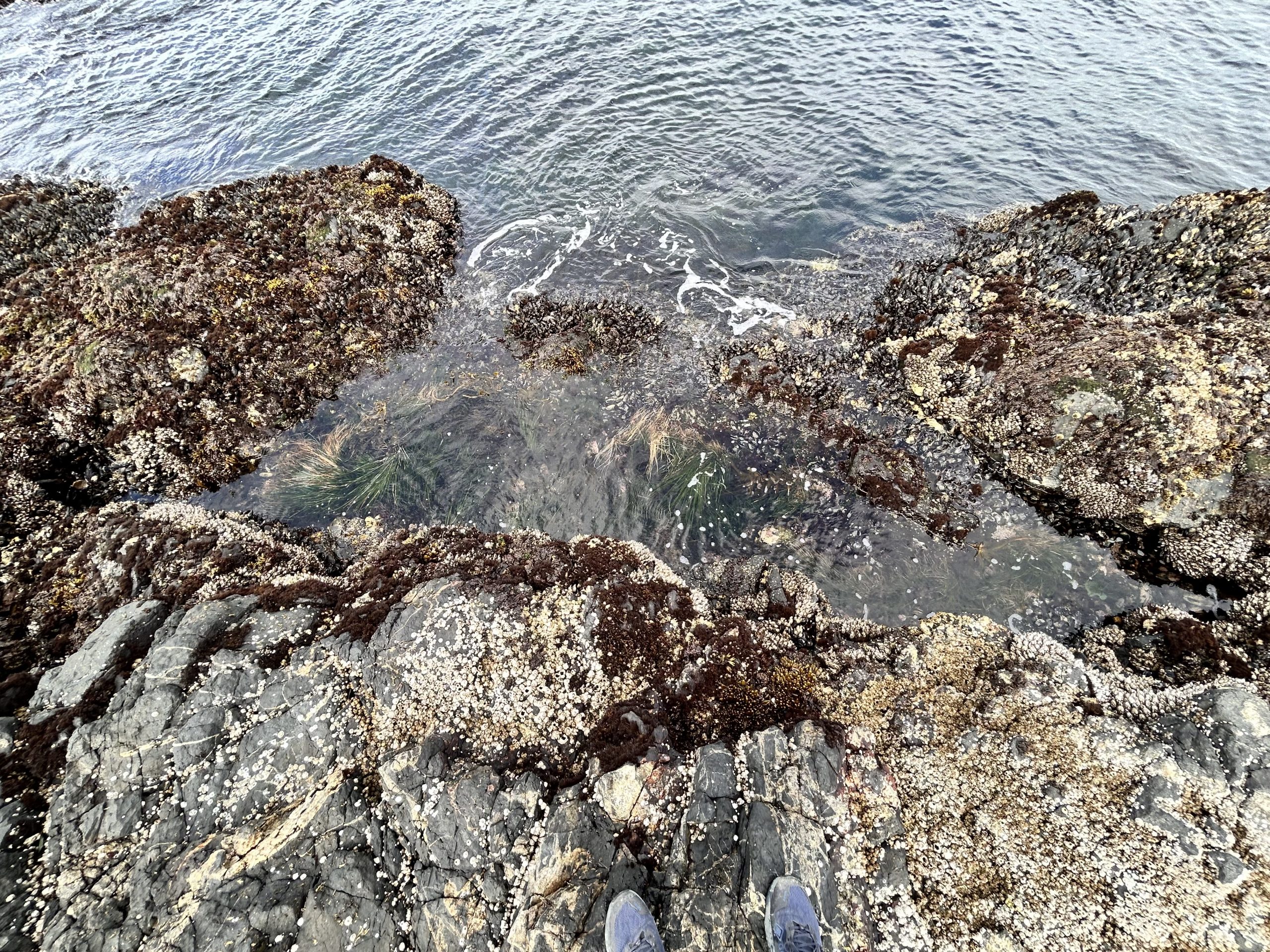
-
tidelpool#6
-
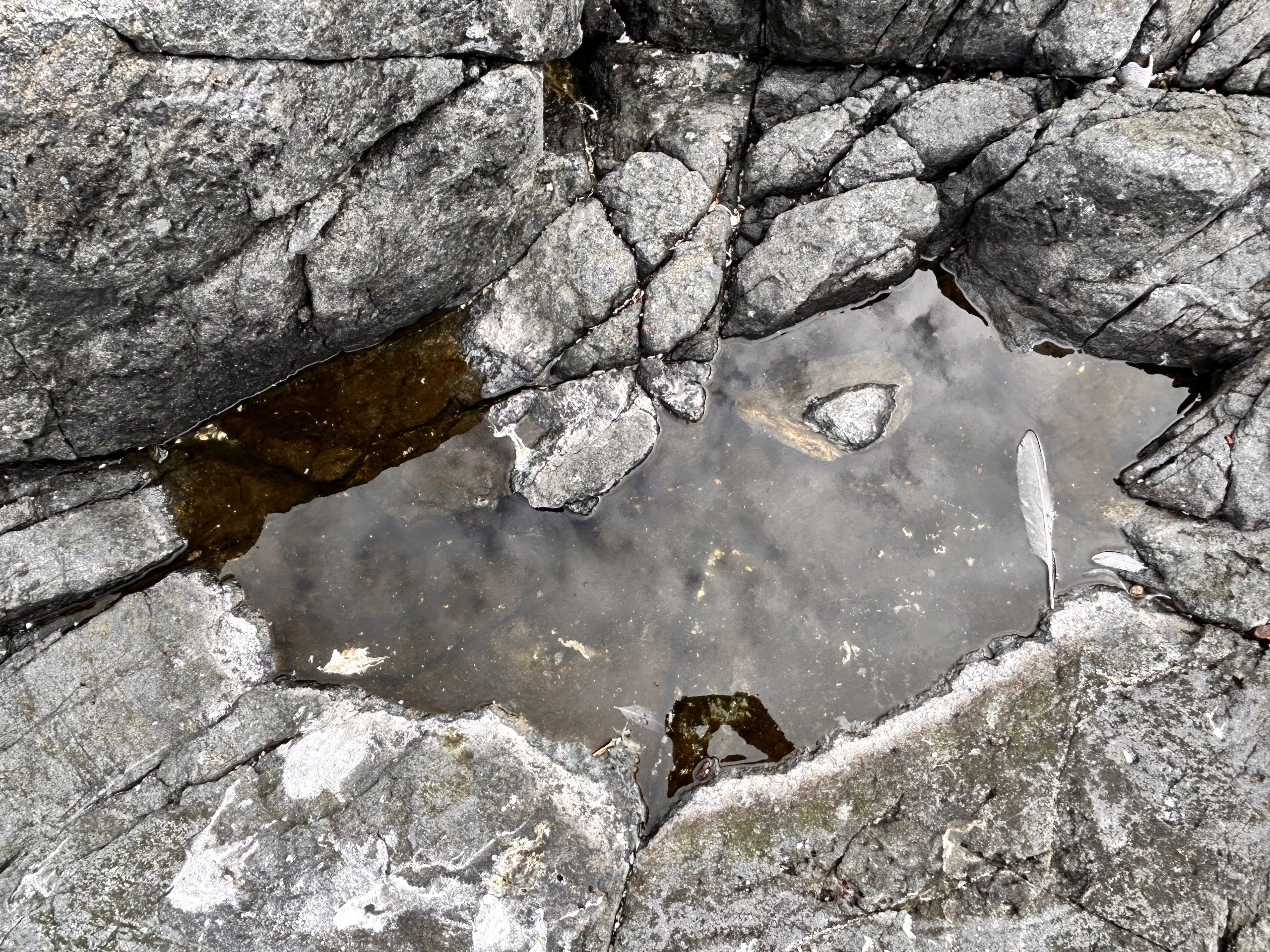
-
tidepool#7
-
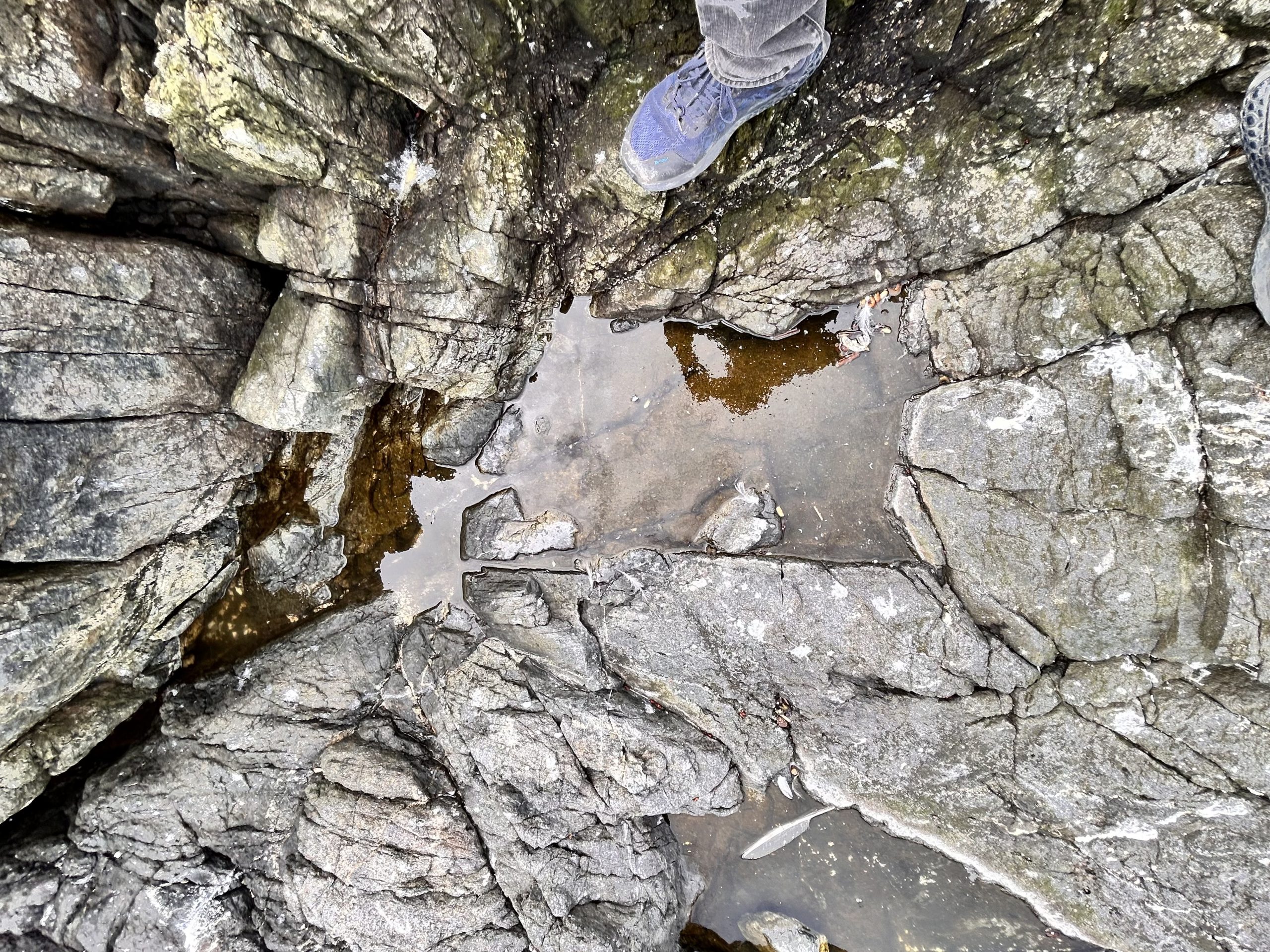
-
tidepool8
-

-
tidelpool#9
-
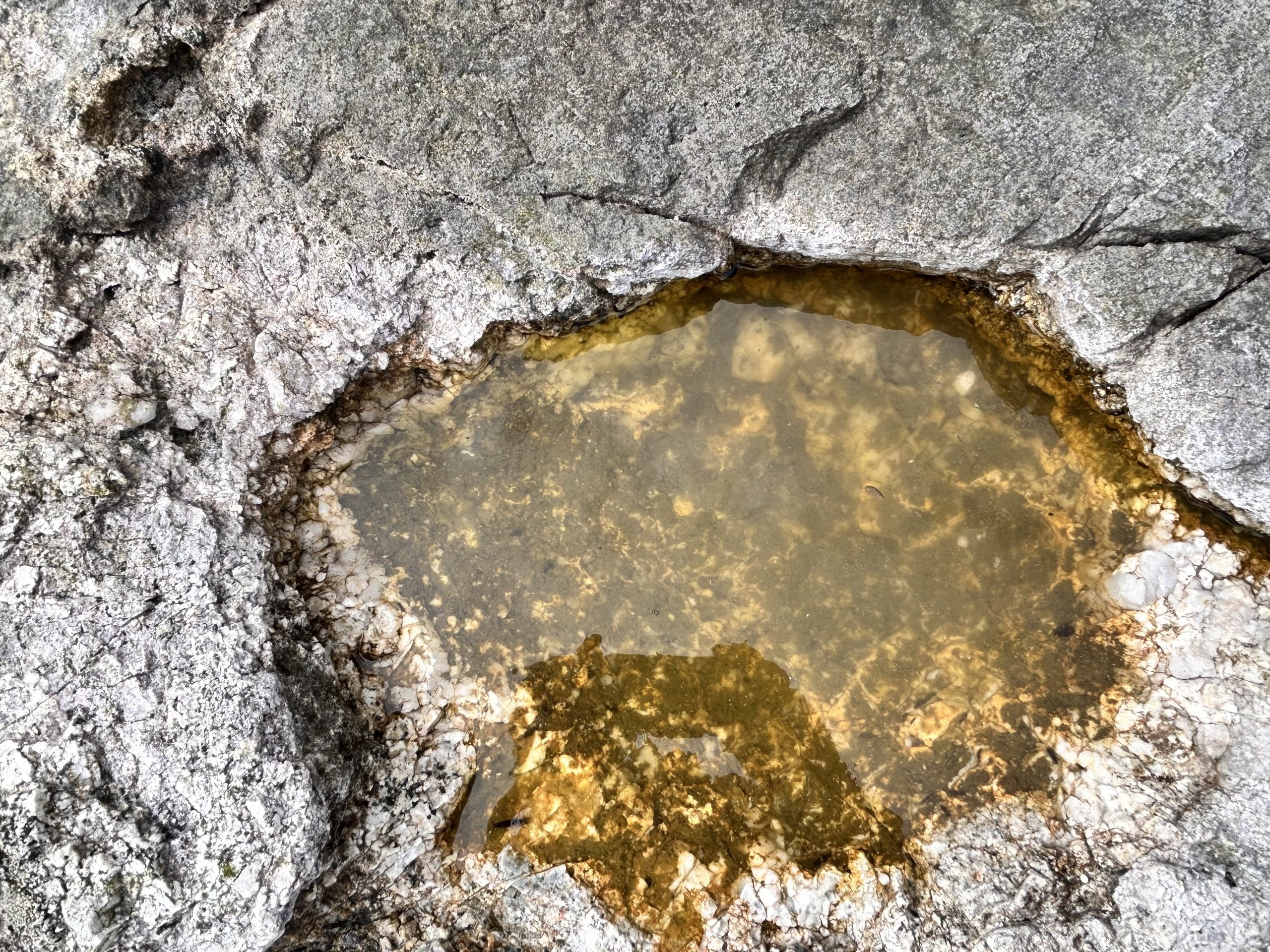
-
tidelpool#10
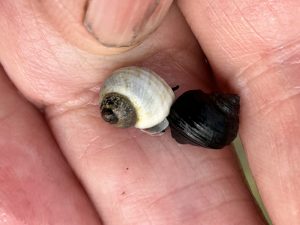 I checked pool #4 which has a white quartz intrusion through it to see if the white periwinkle snails were still there.
I checked pool #4 which has a white quartz intrusion through it to see if the white periwinkle snails were still there.
A review of some of the installations on the Island
-
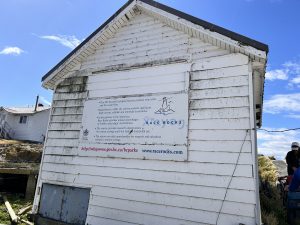
-
Always a problem is the growth of Algae on the buildings. The Ecoguardians play a big role in trying to keep up with this problem and it involves scrubbing and hosing down.
-
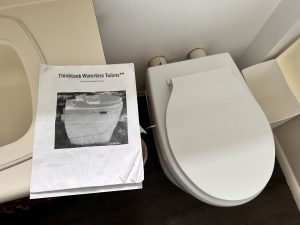
-
The latest version of composting toilet has proven to be very effective.
-
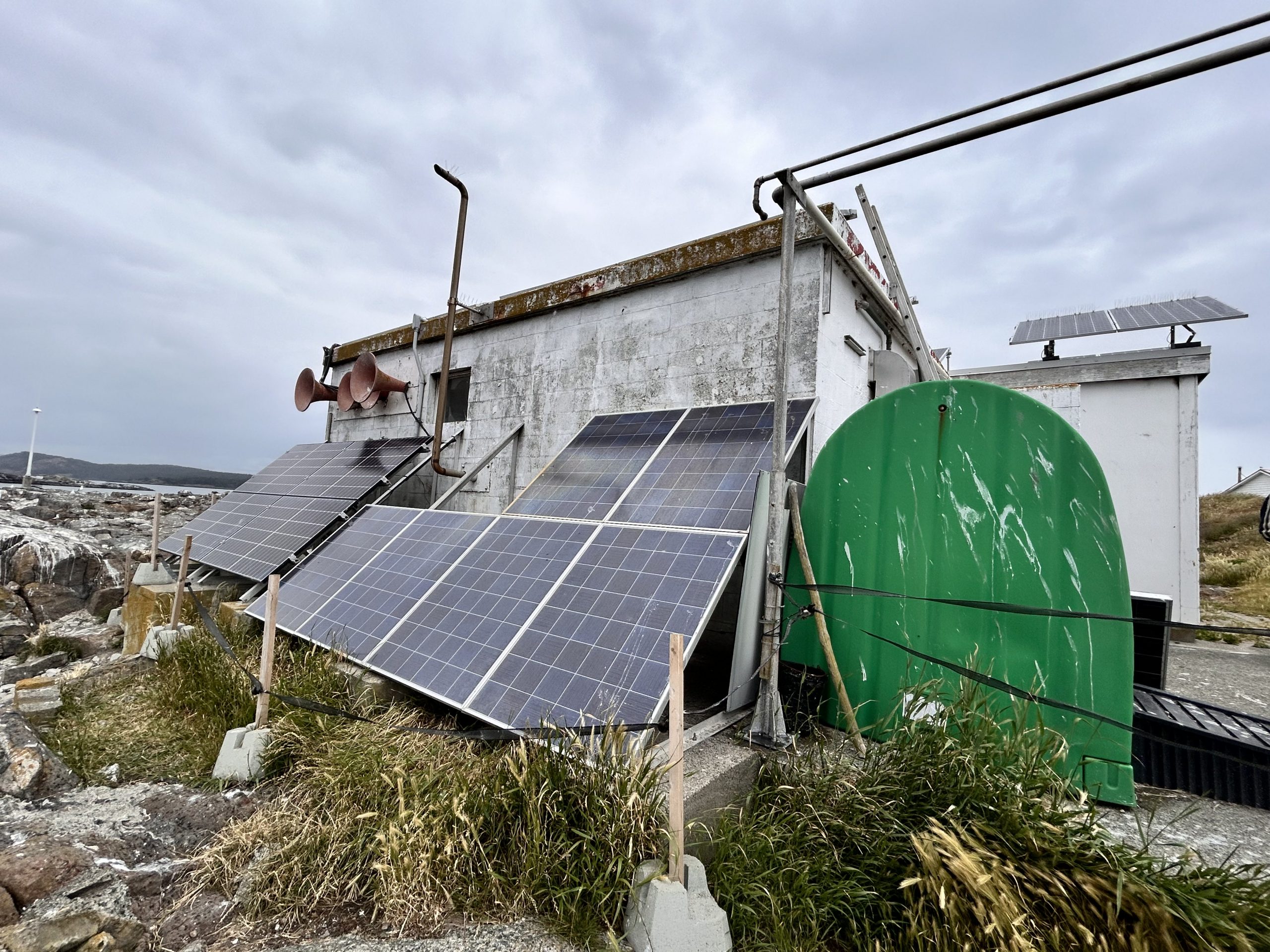
-
Newly added Solar panels provide effective production of energy to run the island in the summer months I hope we can get the red goghorn bells repainted soon . They were te last air chime s to be in service in North America
-
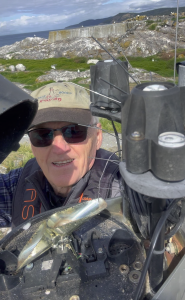
-
I checked on the Davis weather instrument as there have been some erroneous readings of the rain guage tis spring. All seemed to be functioning normally at this end.
-
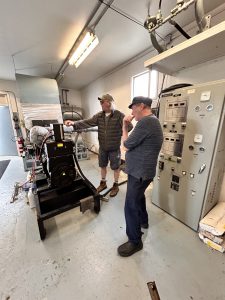
-
Greg gives instruction on the runneiing of equipment in the engine room to James.
-
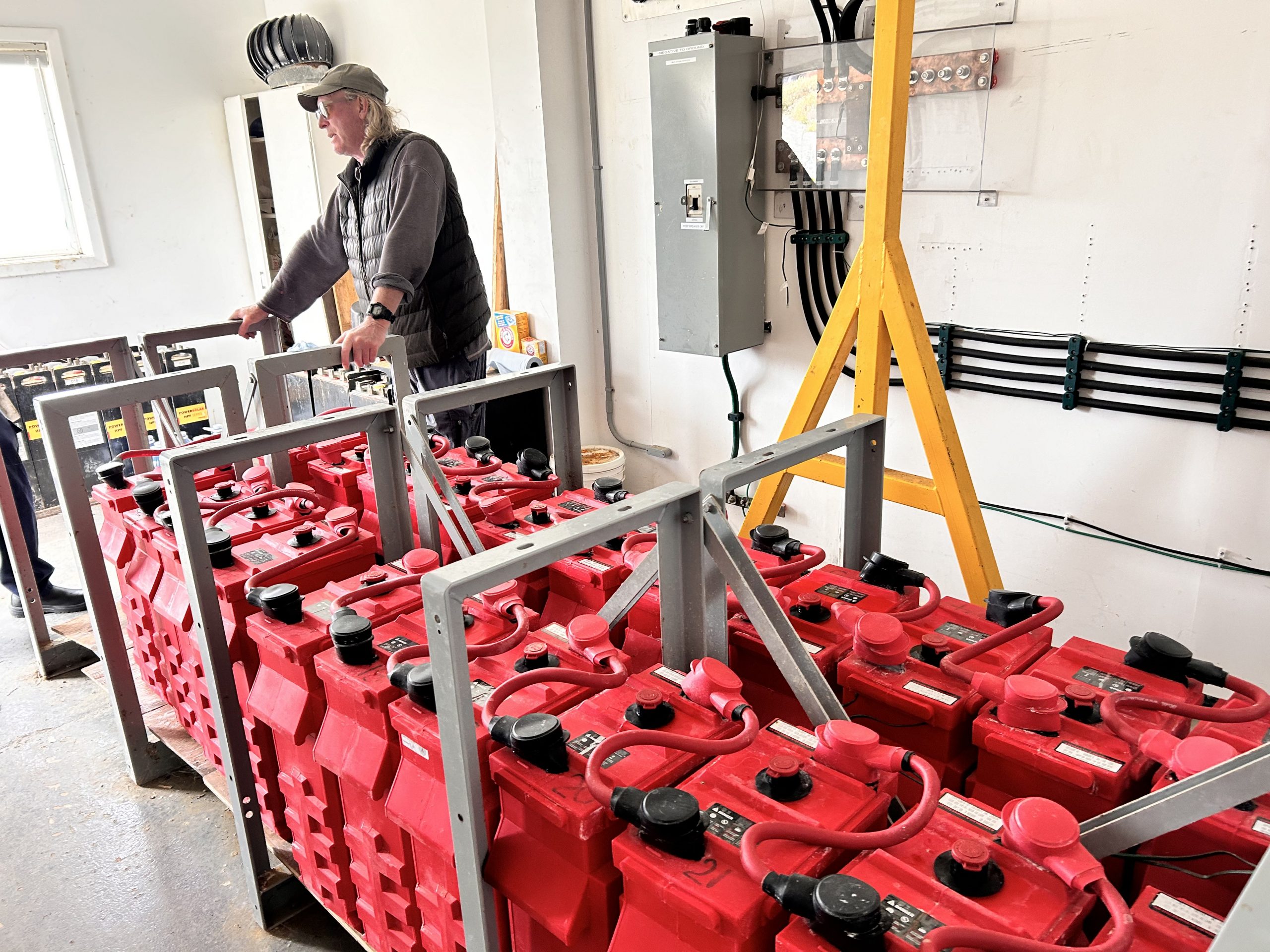
-
Keeping the storage cells at the right capacity is important, so detailed instruction is given to all new Ecoguardians
-

-
This year there has been an invasion of the grass foxtail over much of the island
-

-
It has almost totally replaced the pineapple weed which has been abundant in previous years
-

-
This male elephant seal has taken up residence on the island and doent seem to be botthered by the foxtail
-

-

-
one of the many Ecotourism boats passes through the channel North of the docks
Due to recent notices on social media about the problems that pet owners are having when their dogs get exposed to foxtail , I was concerned about whether there was a similar problem with marine mammals. This guy certainly seems to be enjoying the location however.
I tried to find the small patch of the rare plant seaside plant Romanzoffia on the rocks on the East side of the house. Unfortunately the area was covered with knotweed now. We will have to check again in the winter.
The Turkish marsh gladiolus is now in bloom. This is a good example of a garden escape, planted by lighthouse keepers probably as much as 80 years ago, they still come up every summer .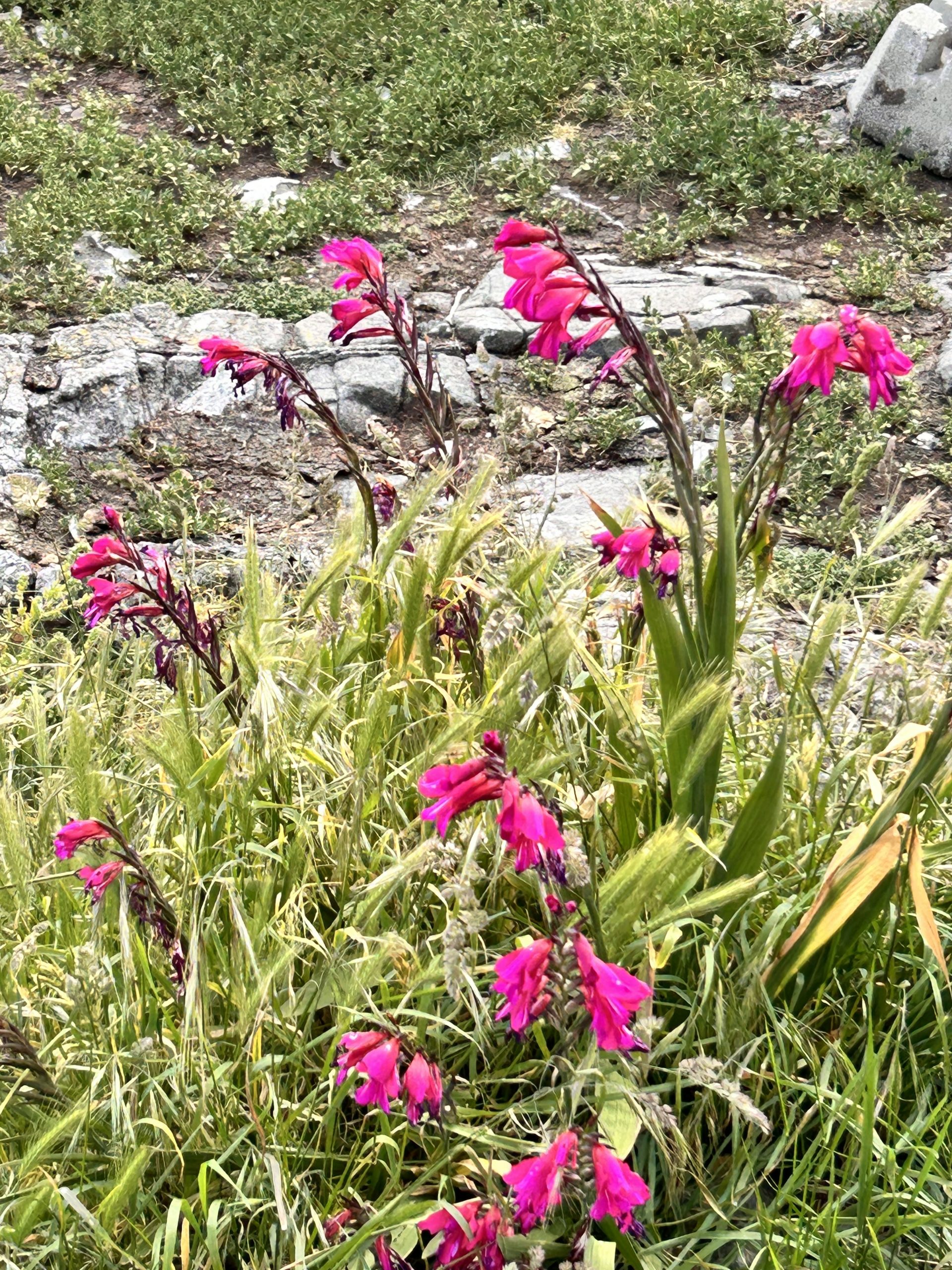
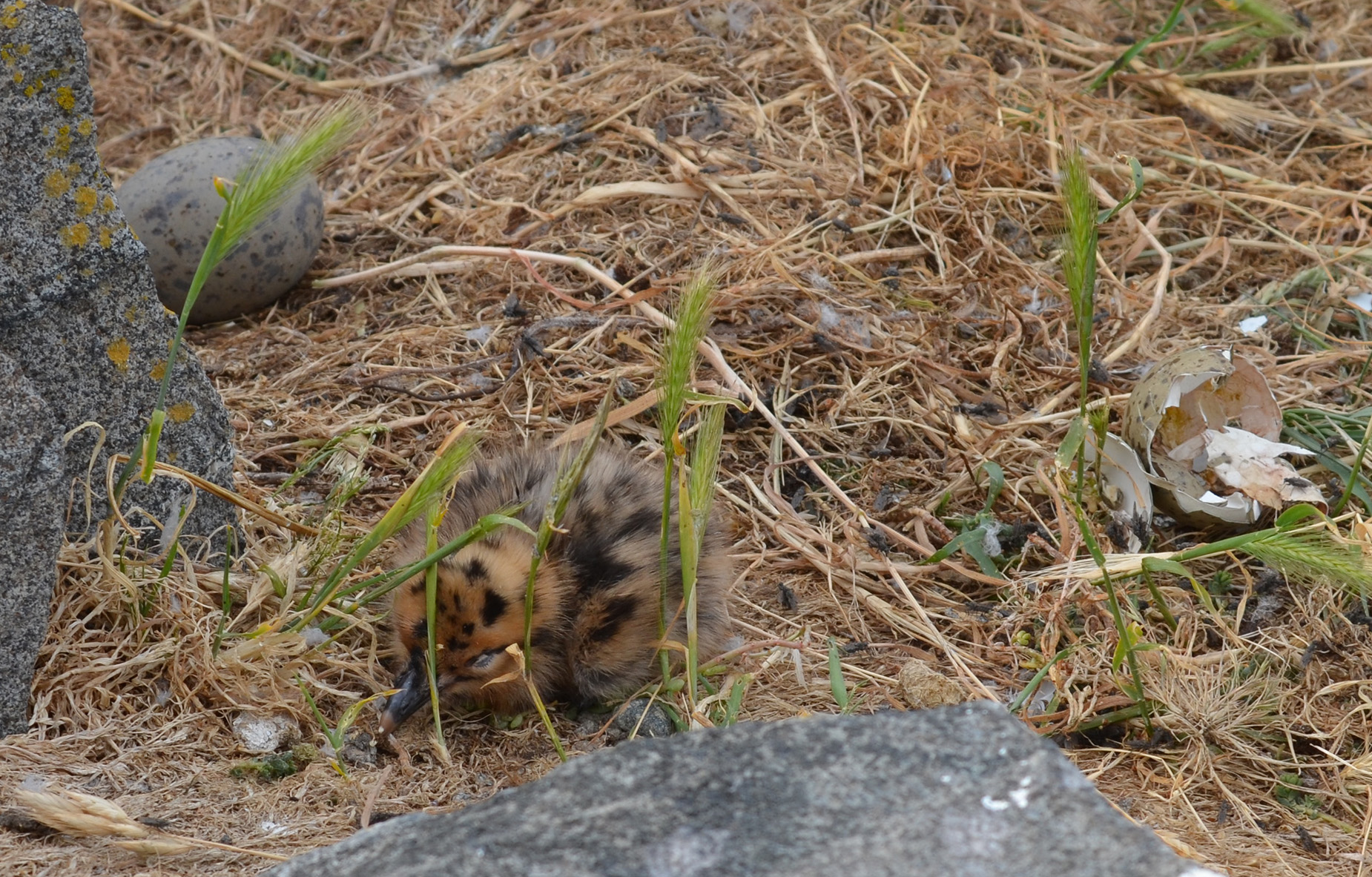
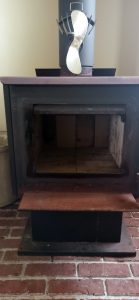
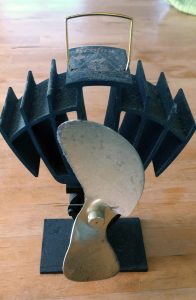



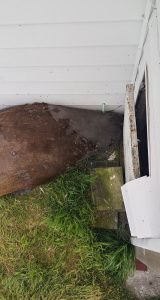
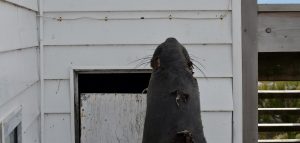
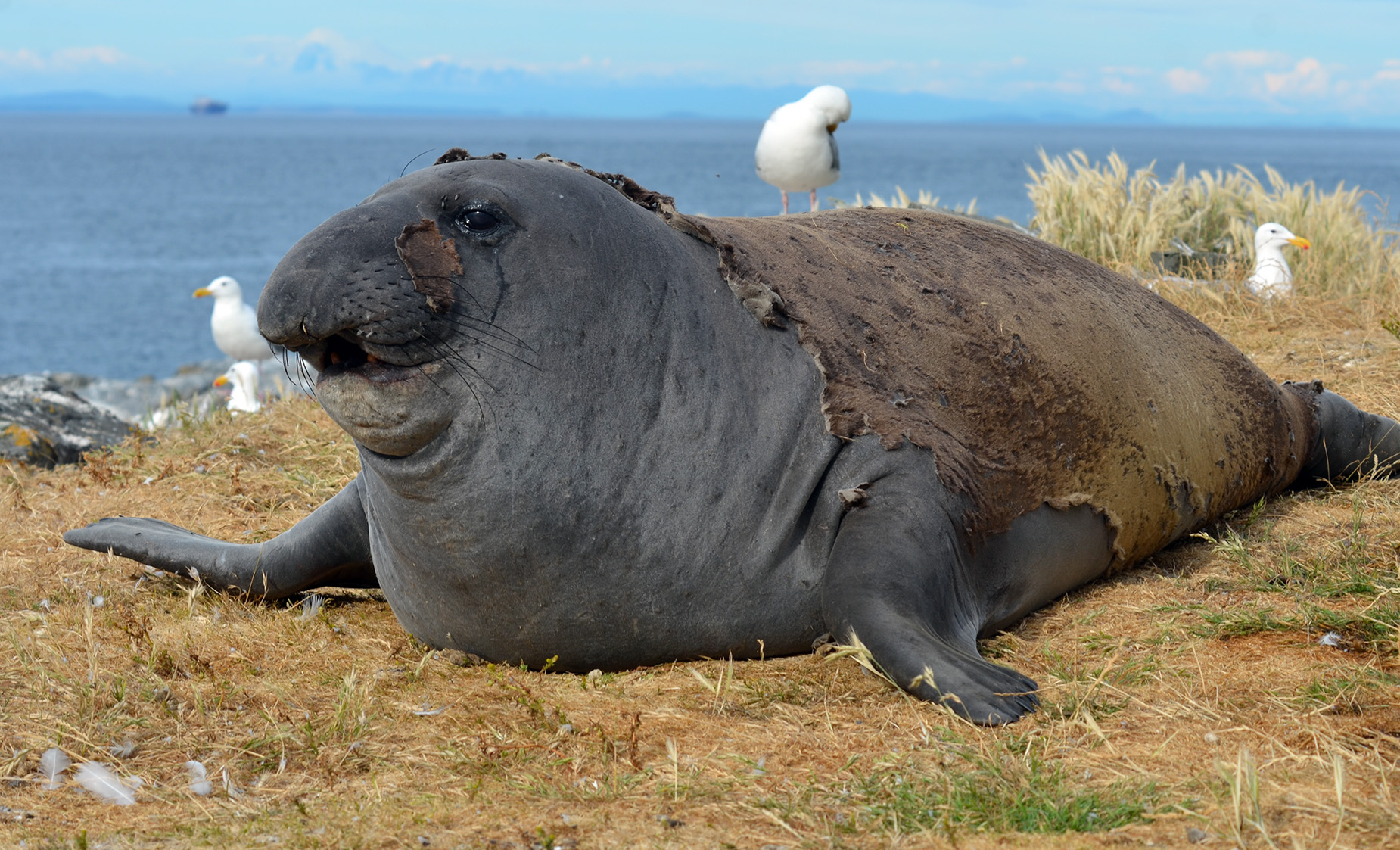
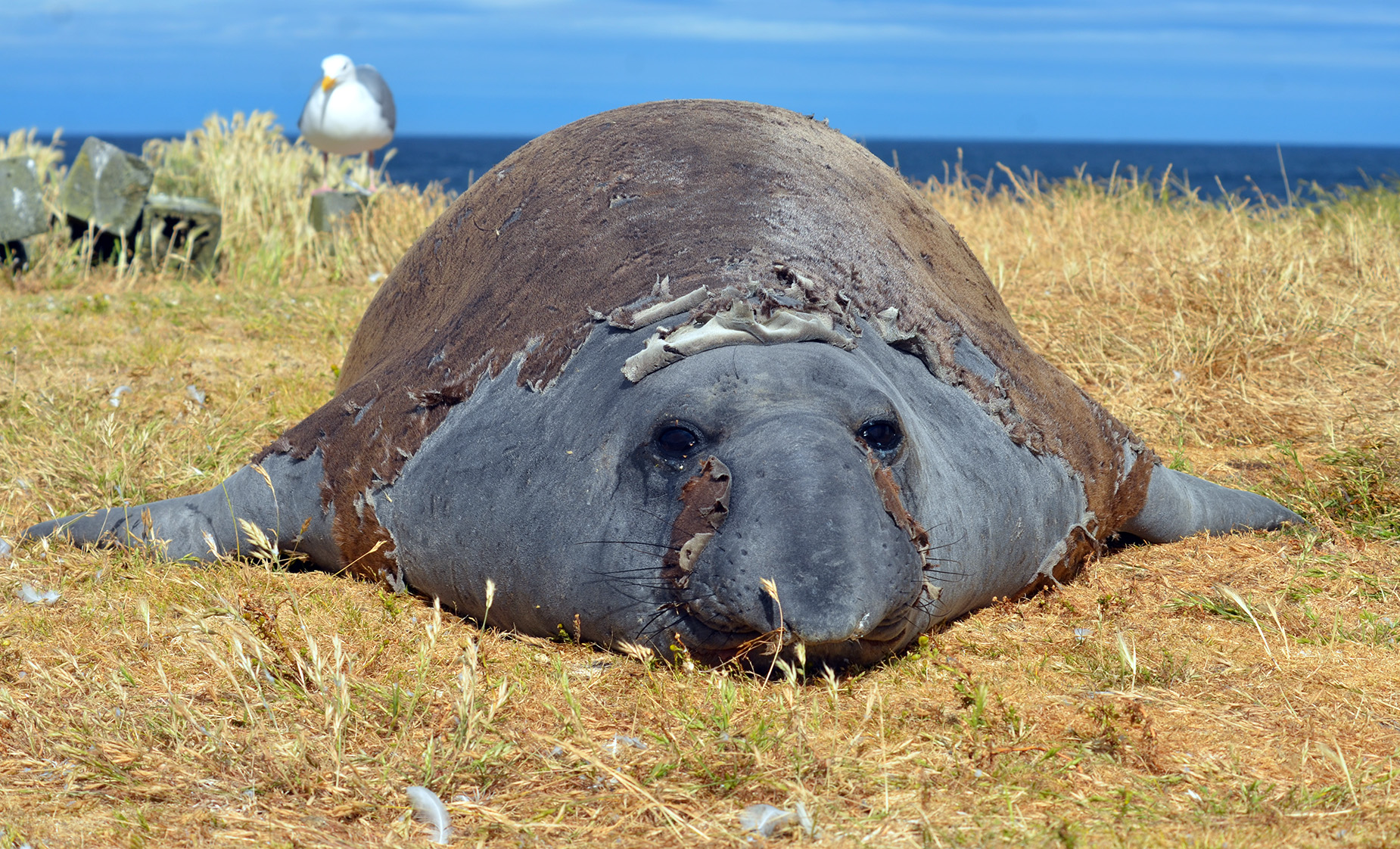
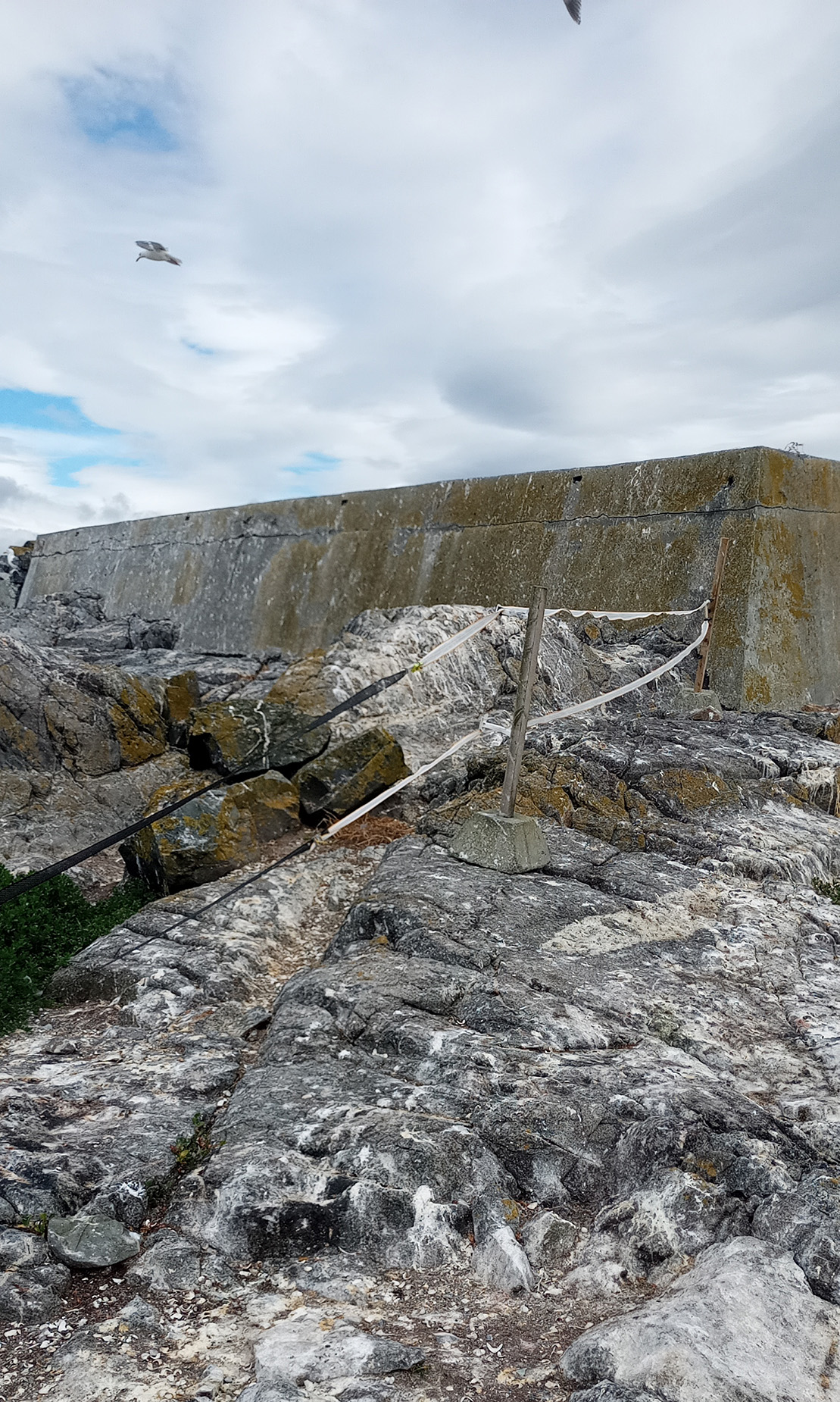
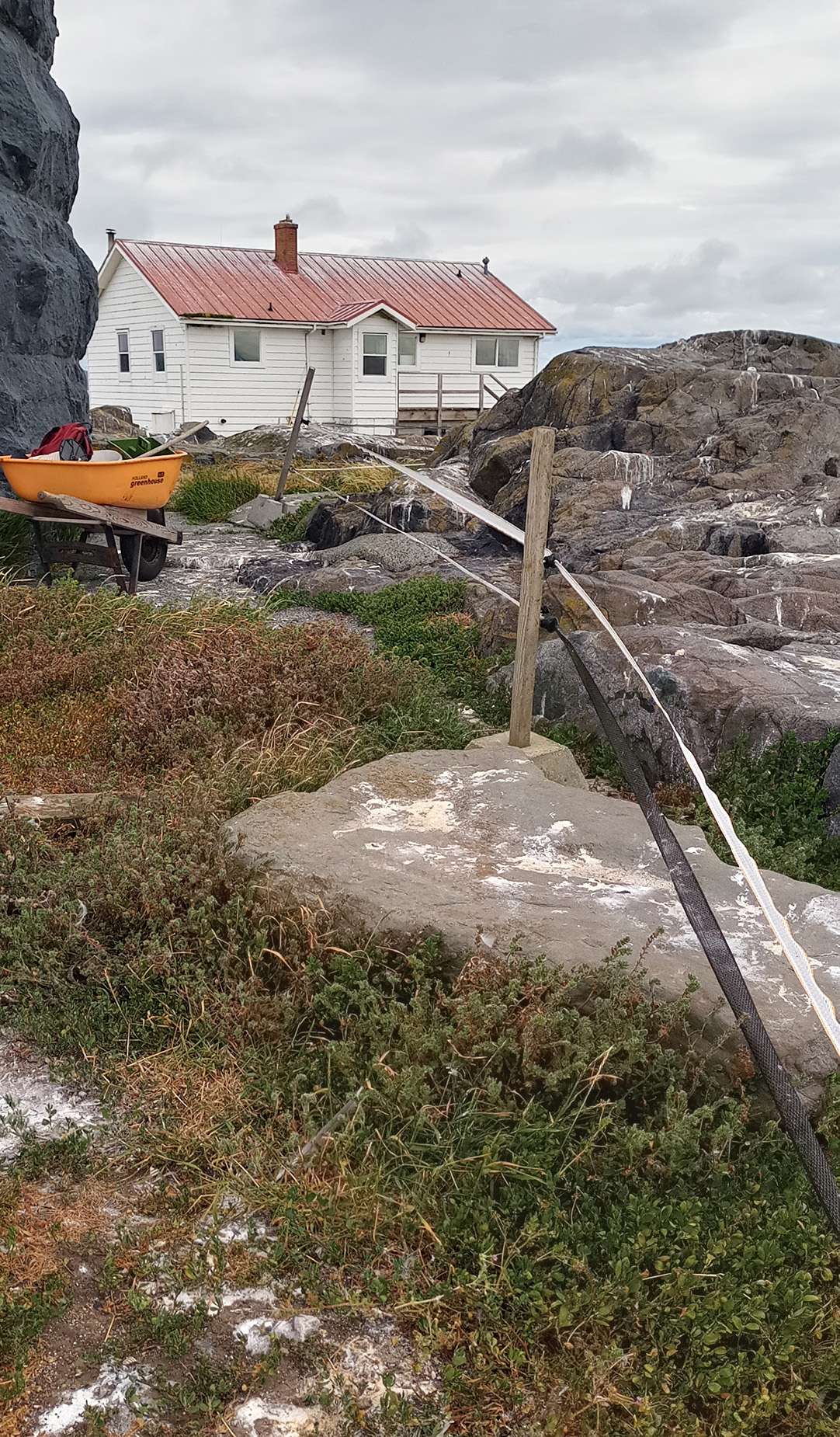
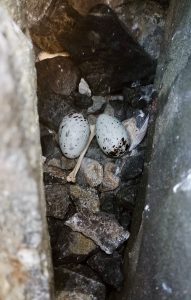
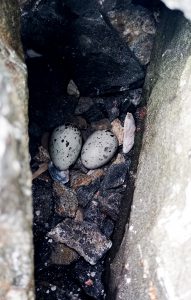
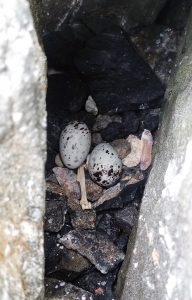
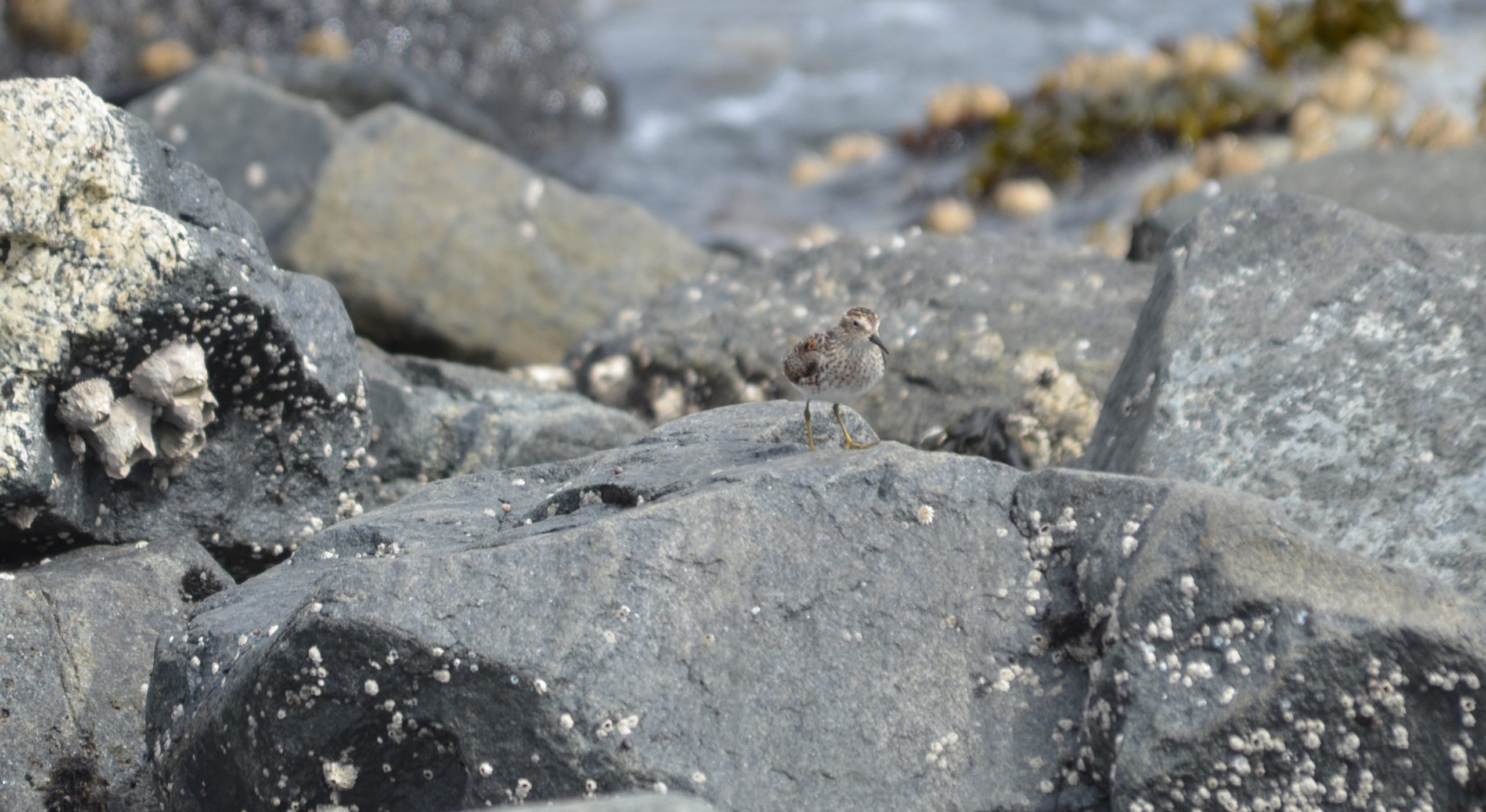
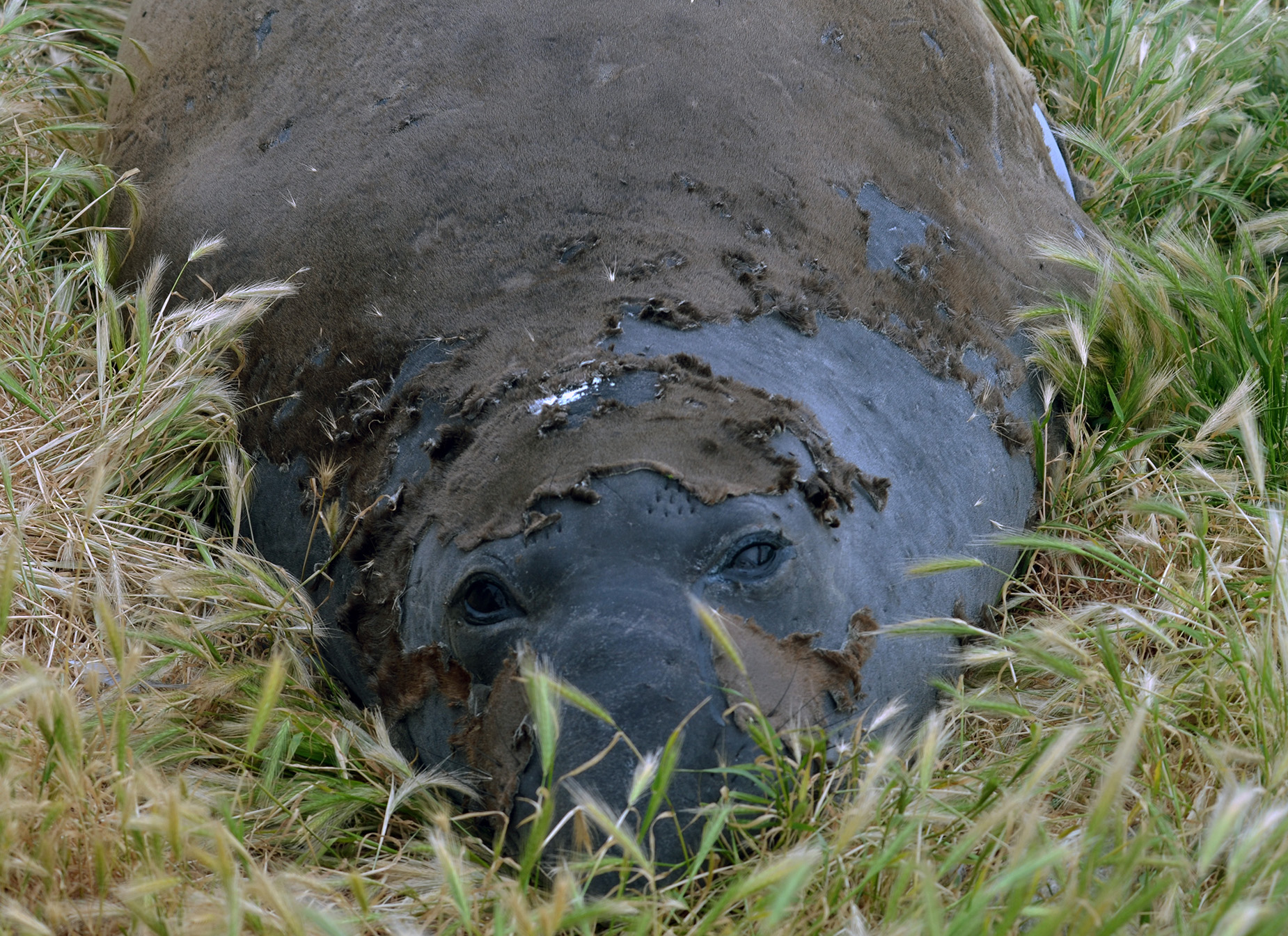
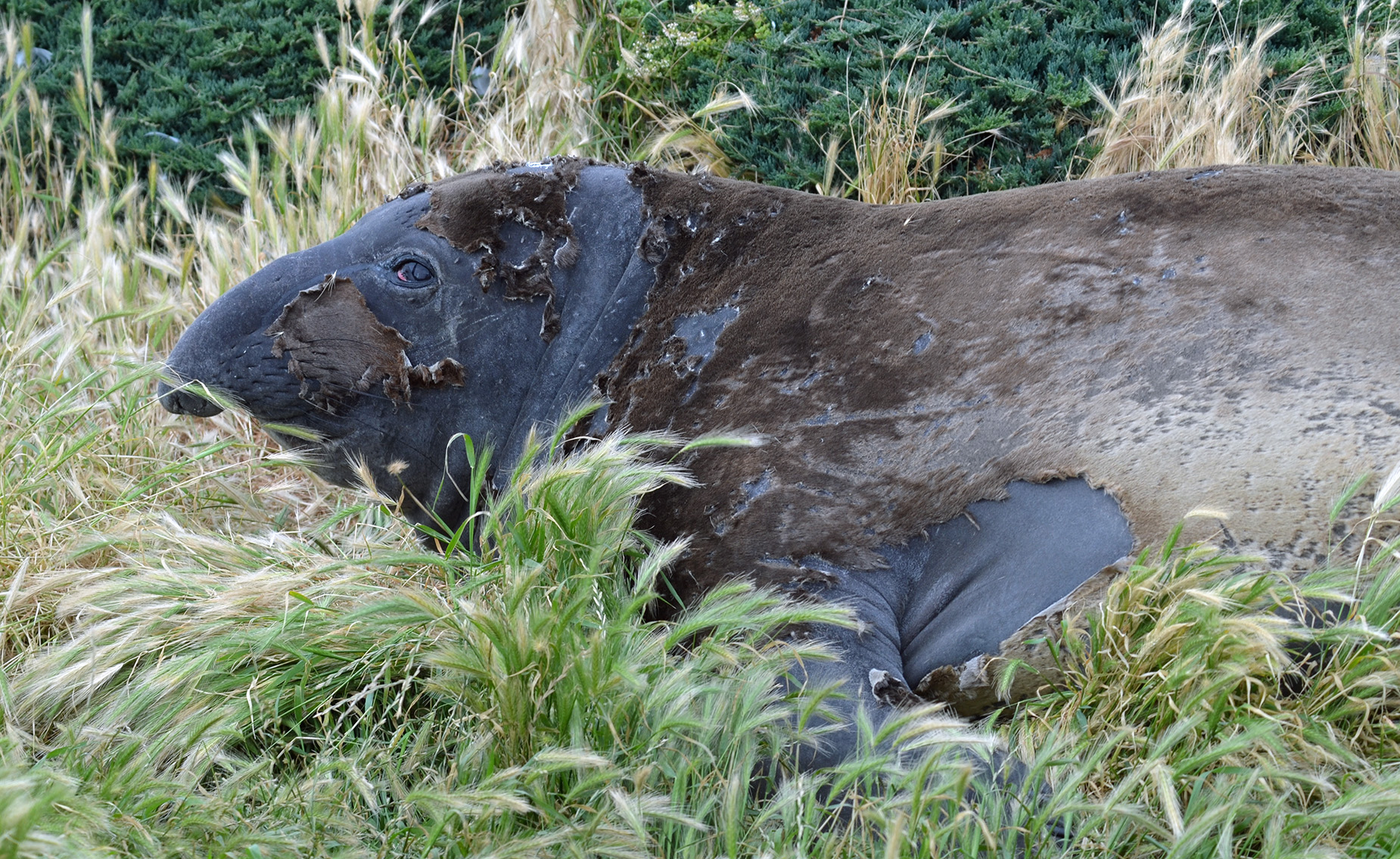

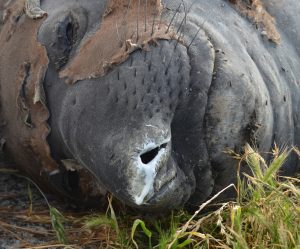

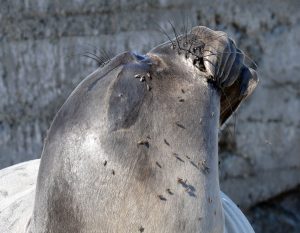 An elephant seal moving on land is anything but graceful. Their rear flippers are not useful for locomotion on land. They use their front flippers to propel themselves forward on their bellies. Their forelimbs or front flippers however, are capable of precise, controlled movements, perfect for getting that itchy spot or wiping away the flies.
An elephant seal moving on land is anything but graceful. Their rear flippers are not useful for locomotion on land. They use their front flippers to propel themselves forward on their bellies. Their forelimbs or front flippers however, are capable of precise, controlled movements, perfect for getting that itchy spot or wiping away the flies.